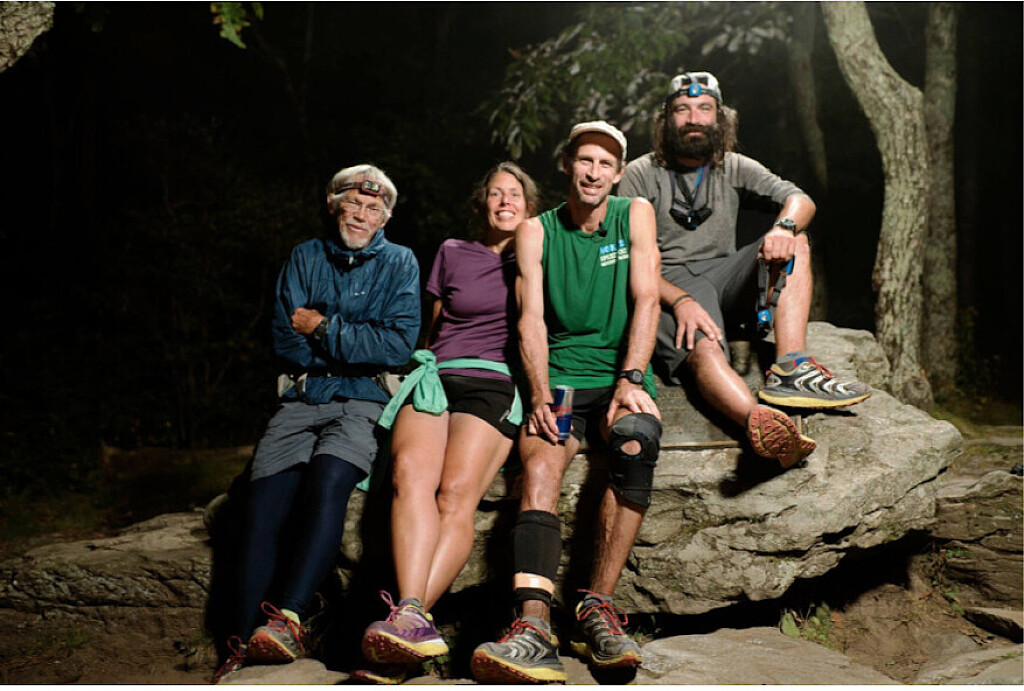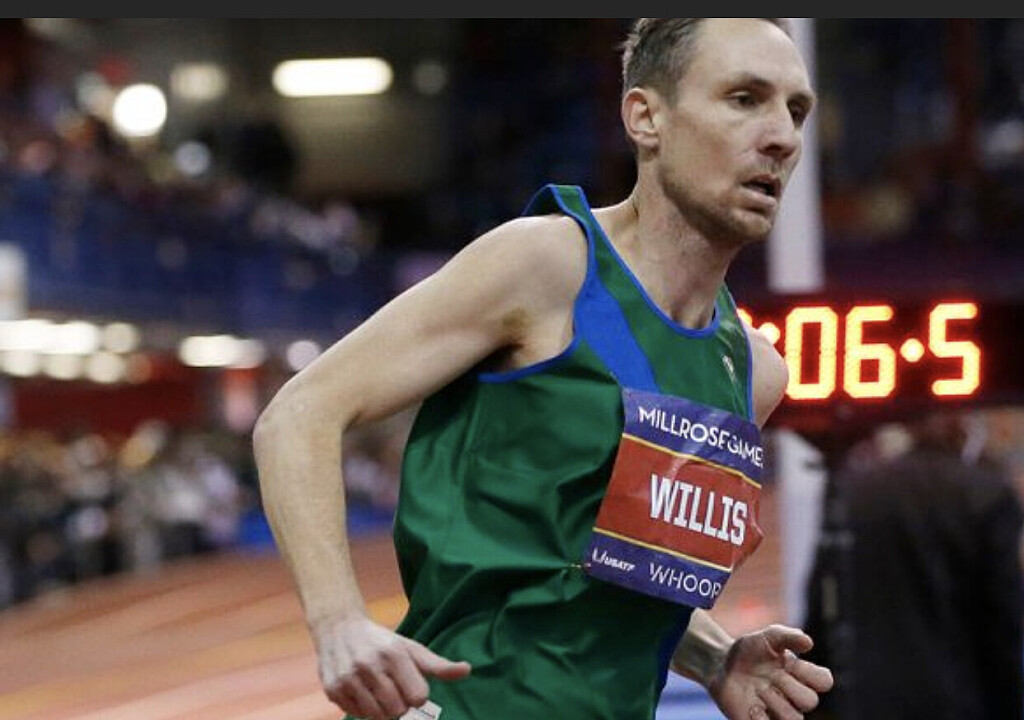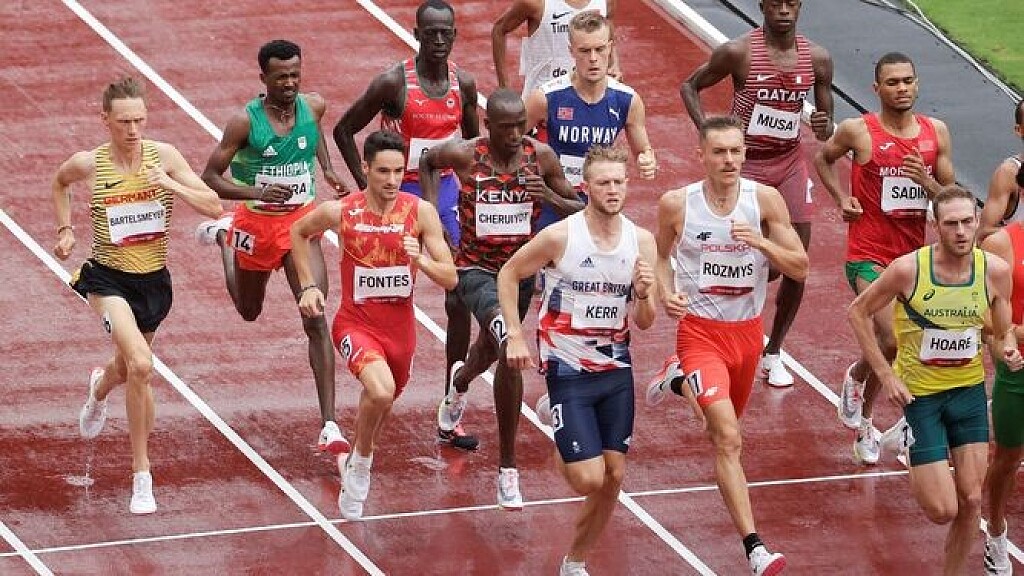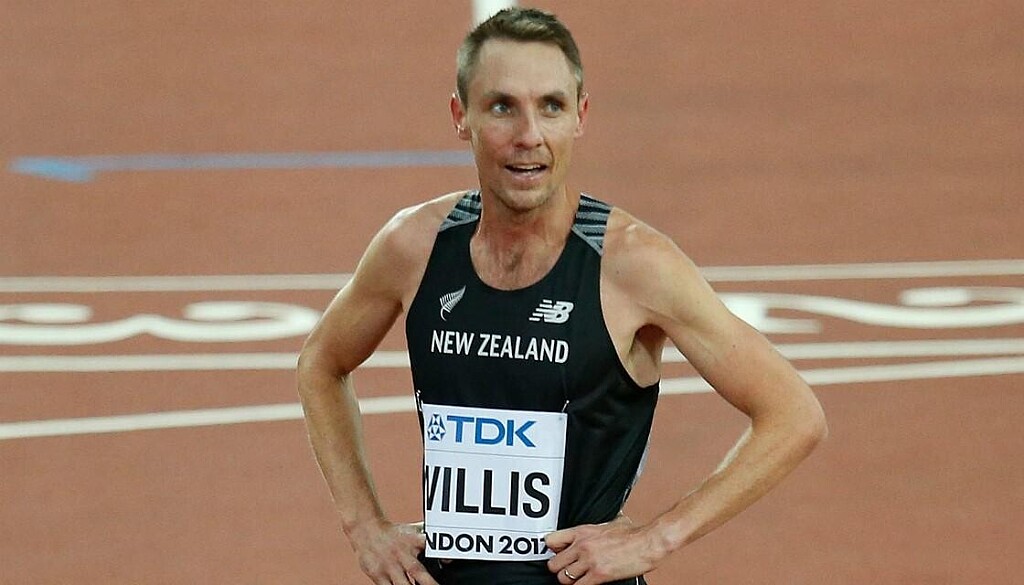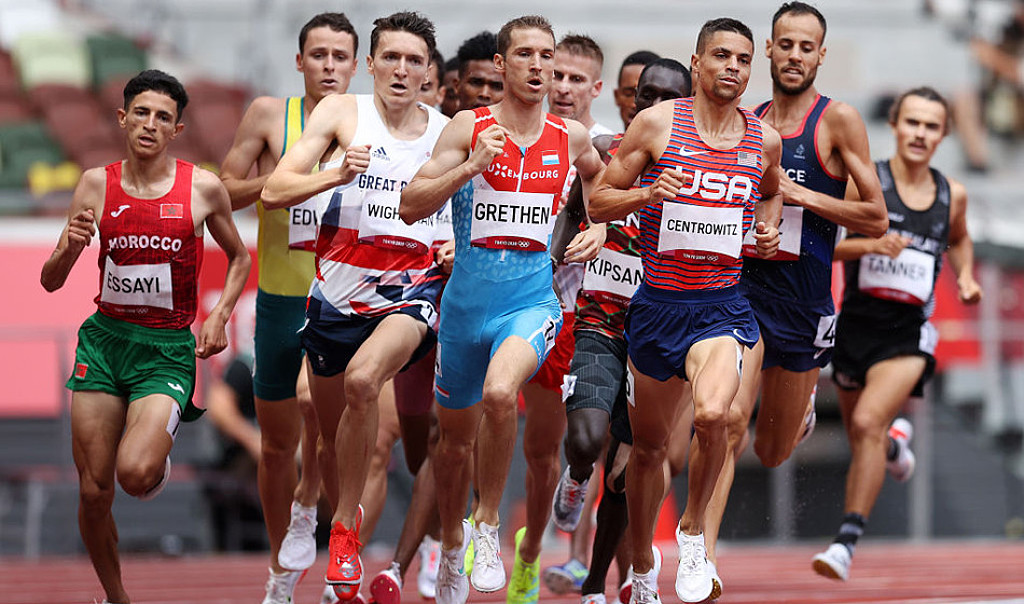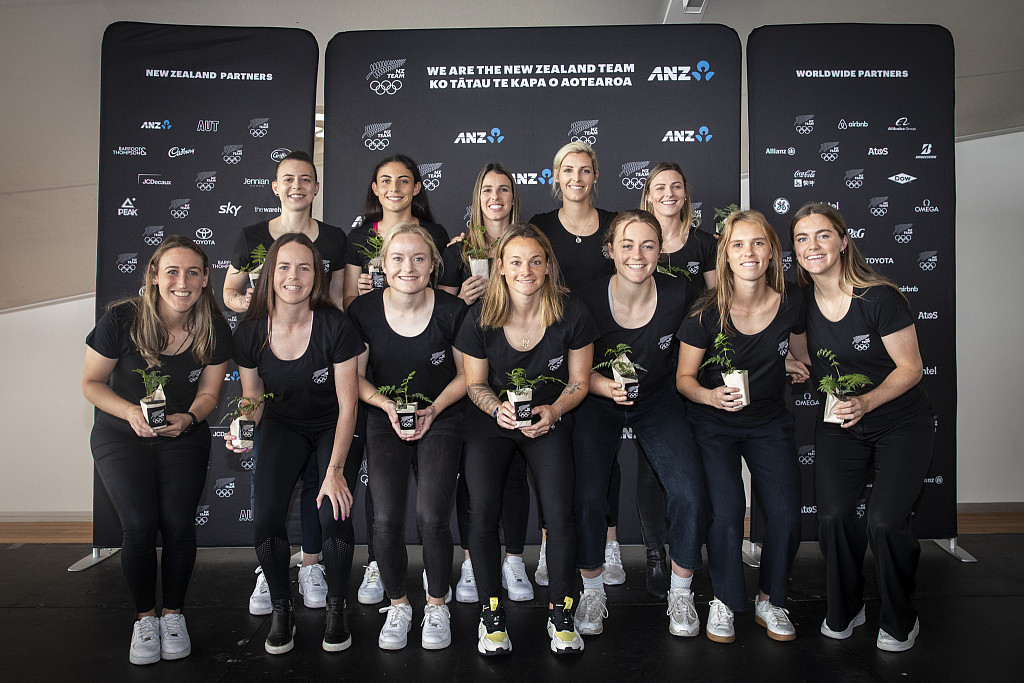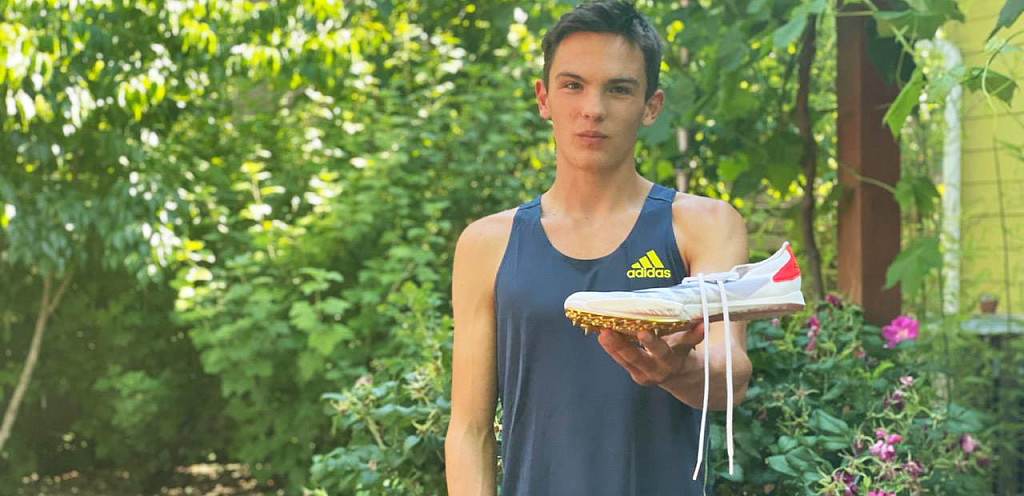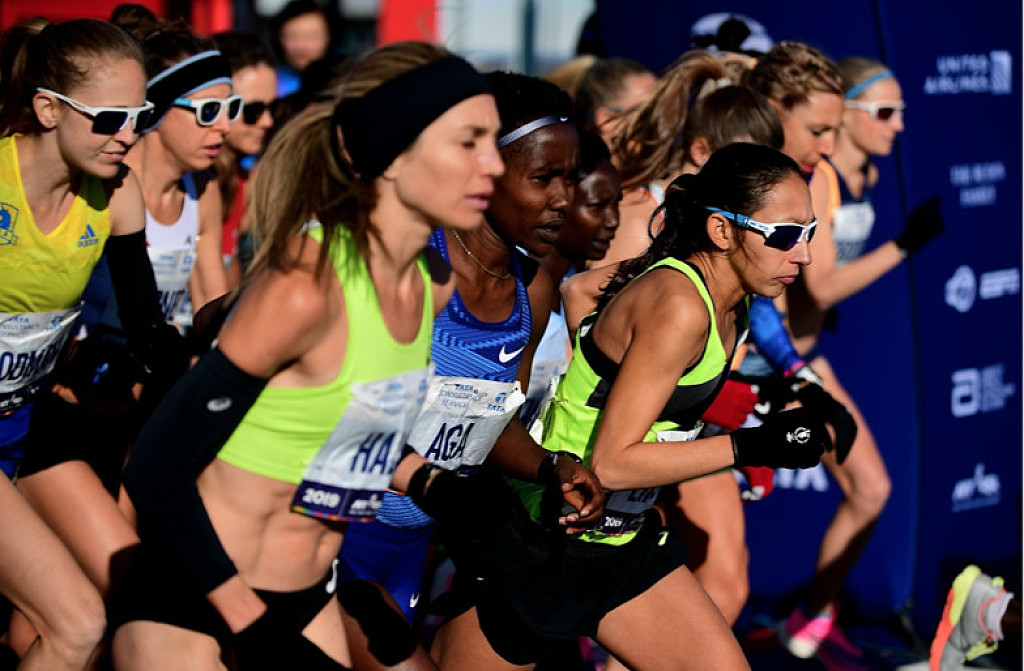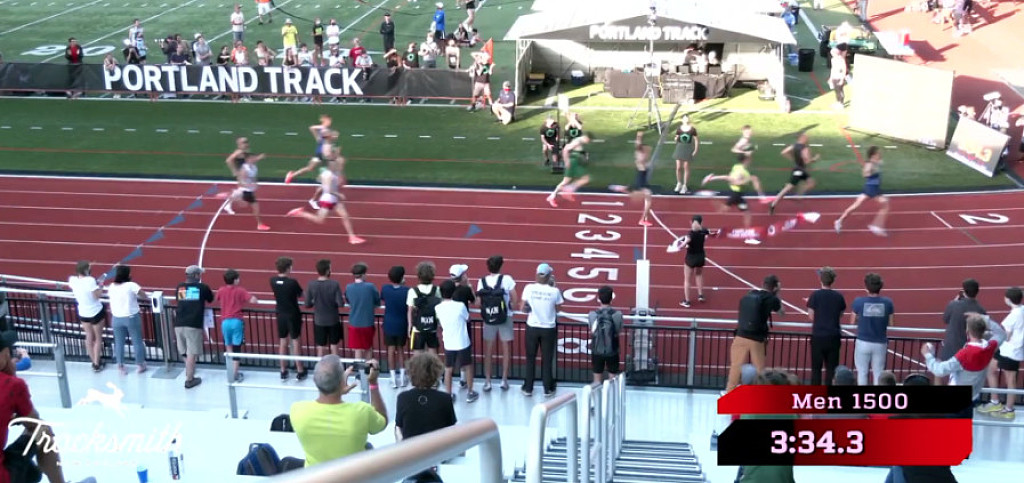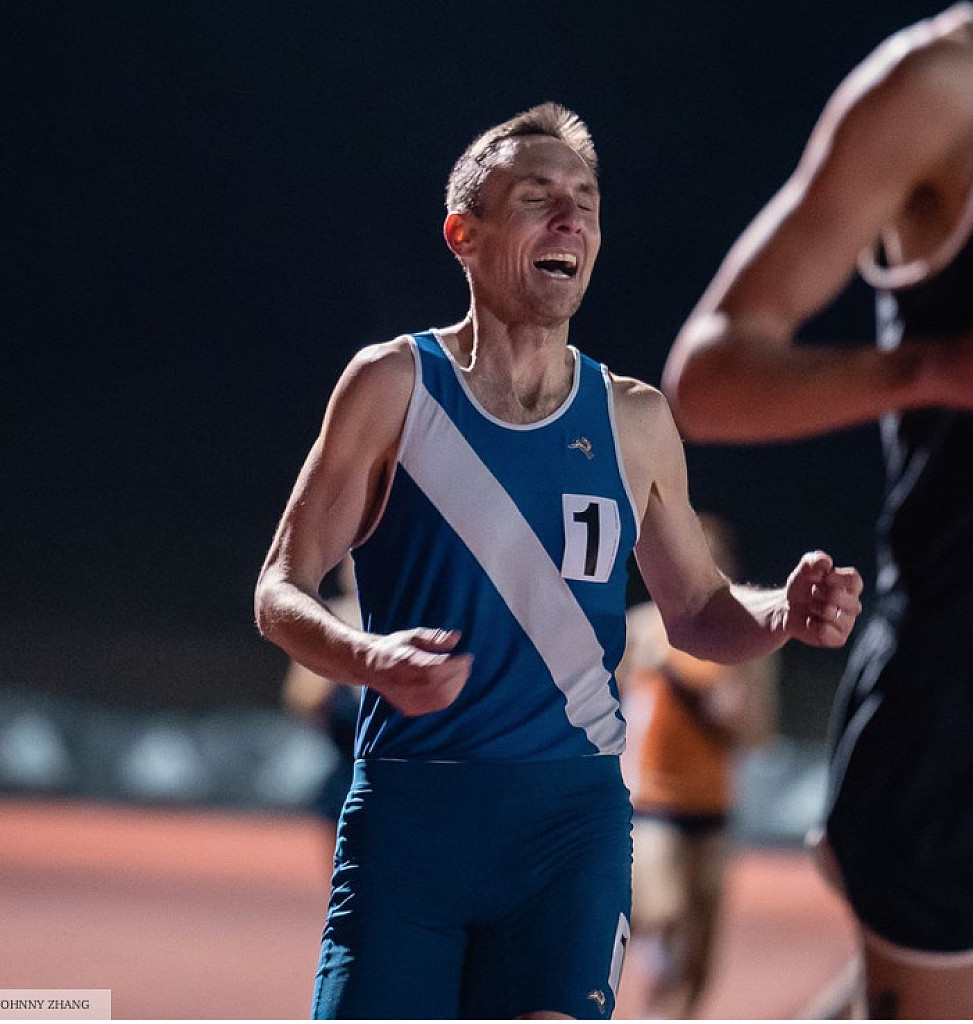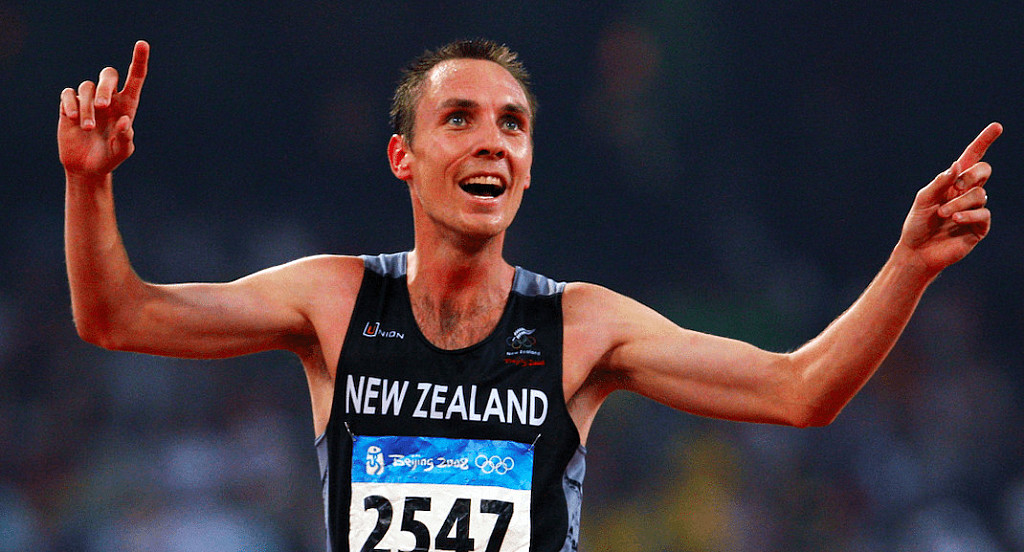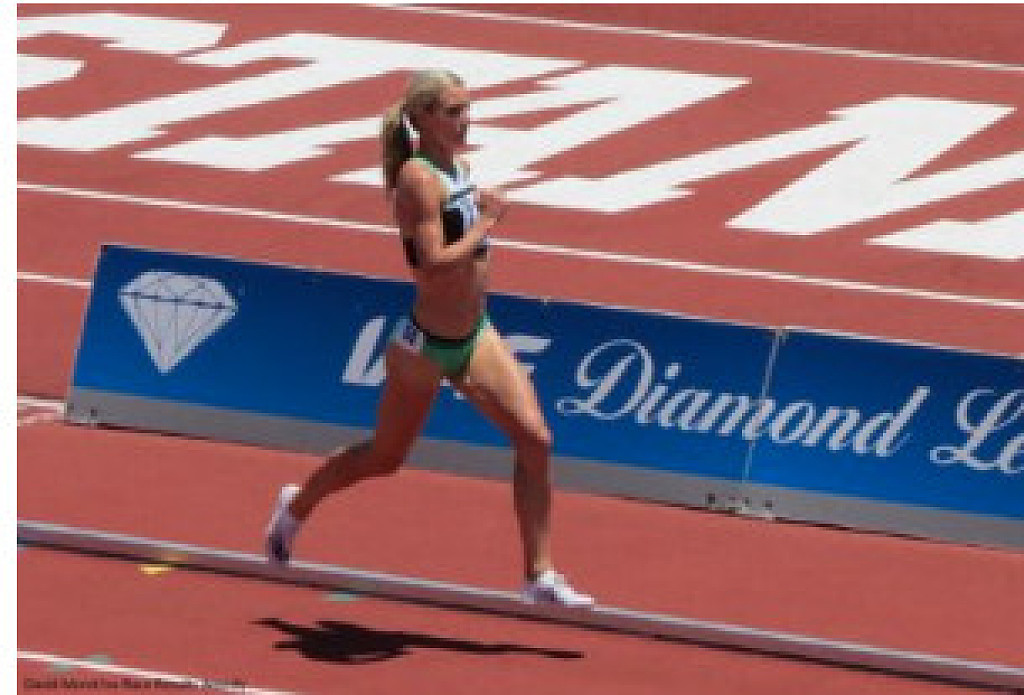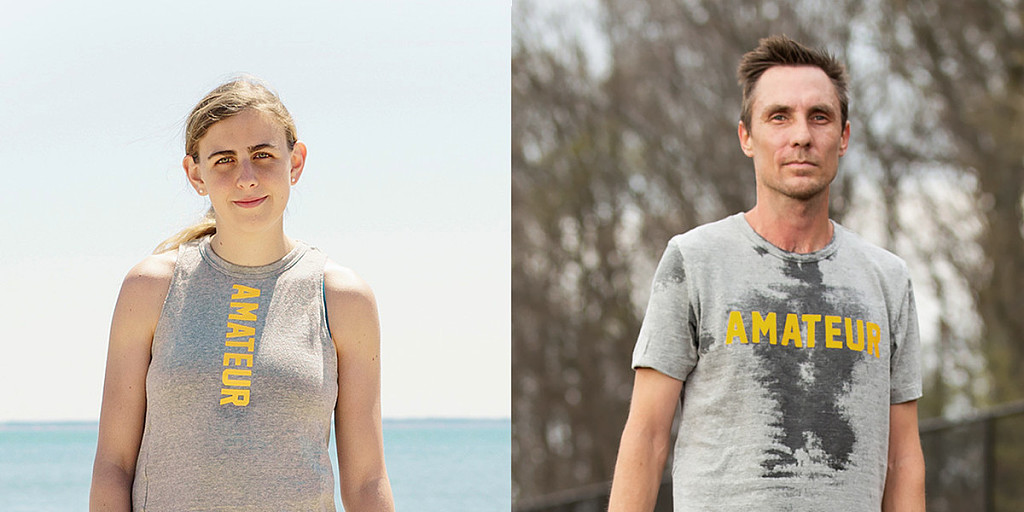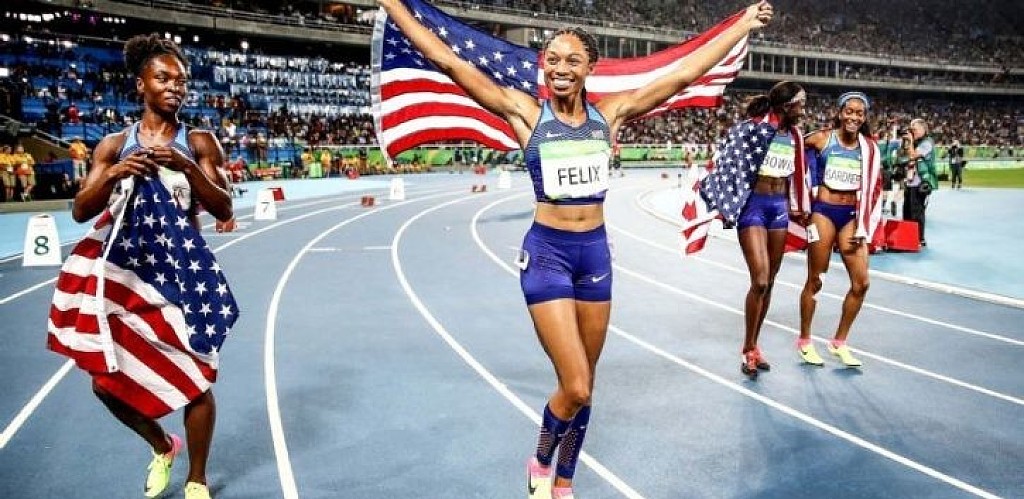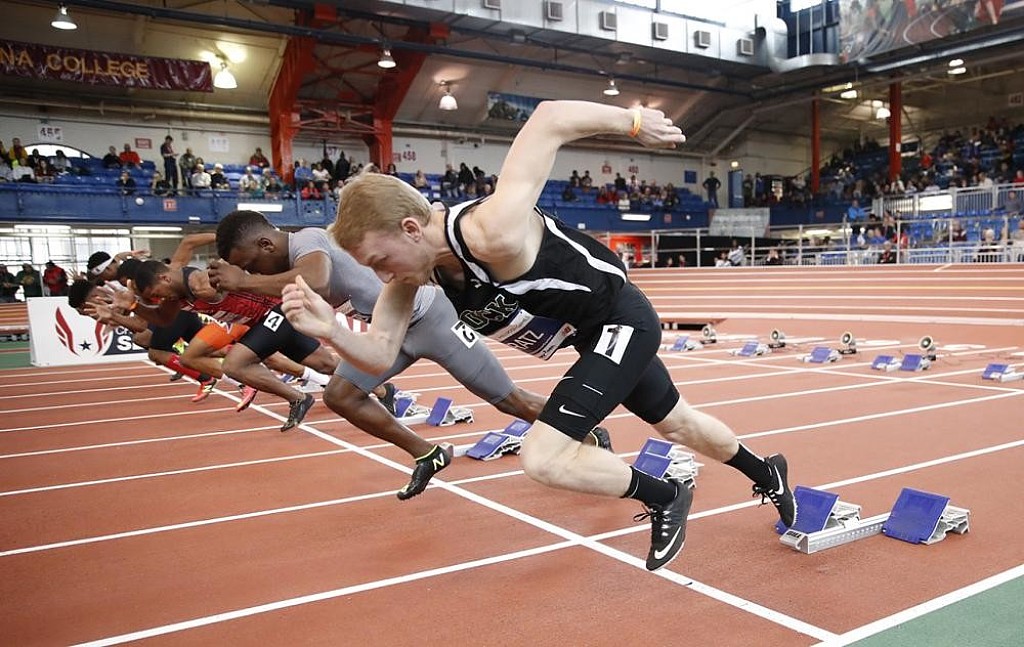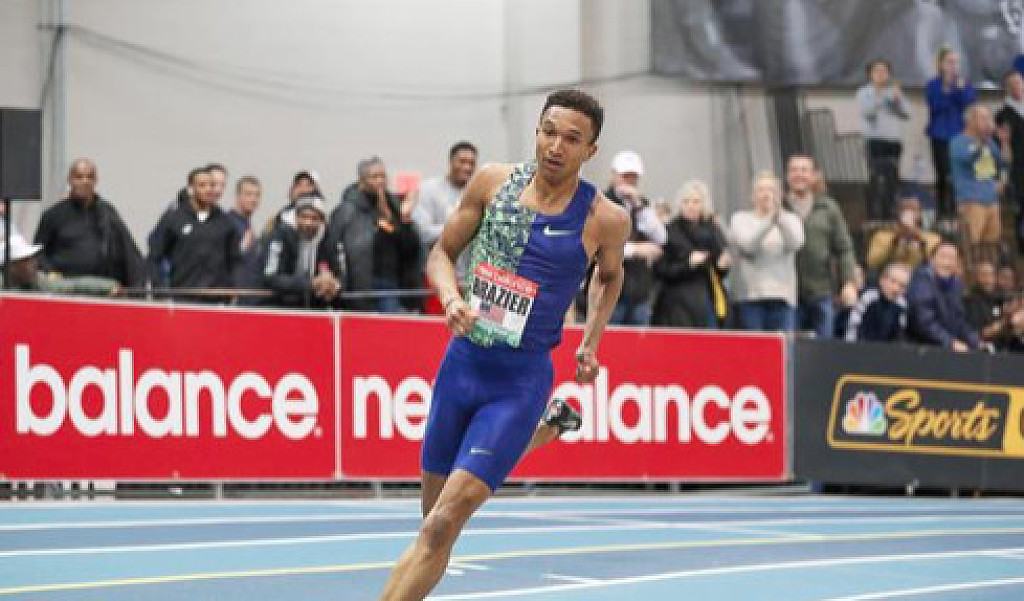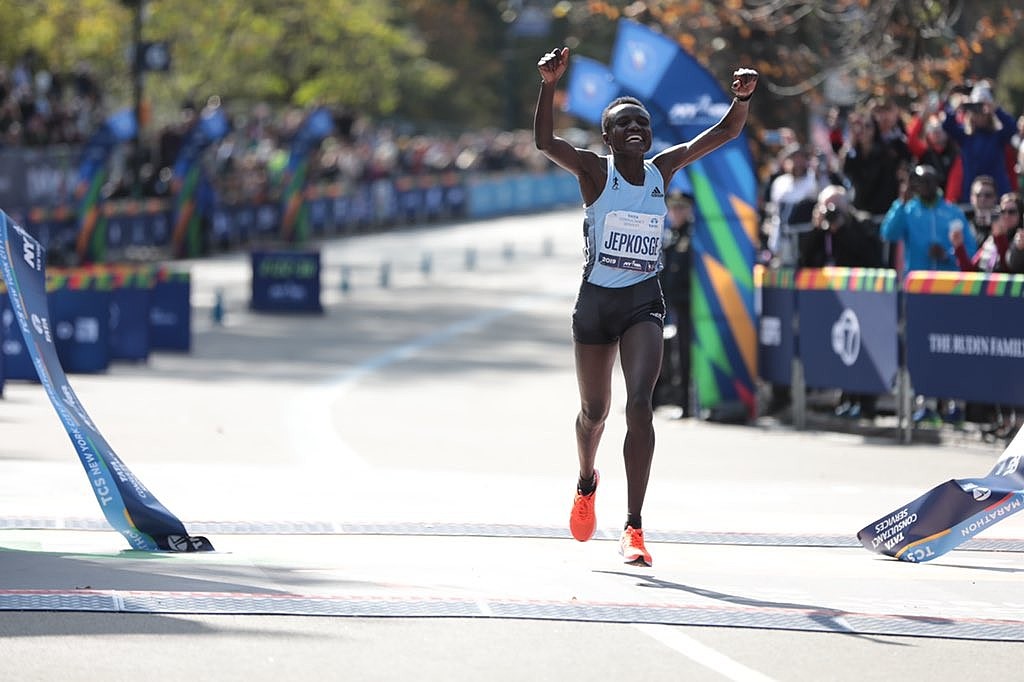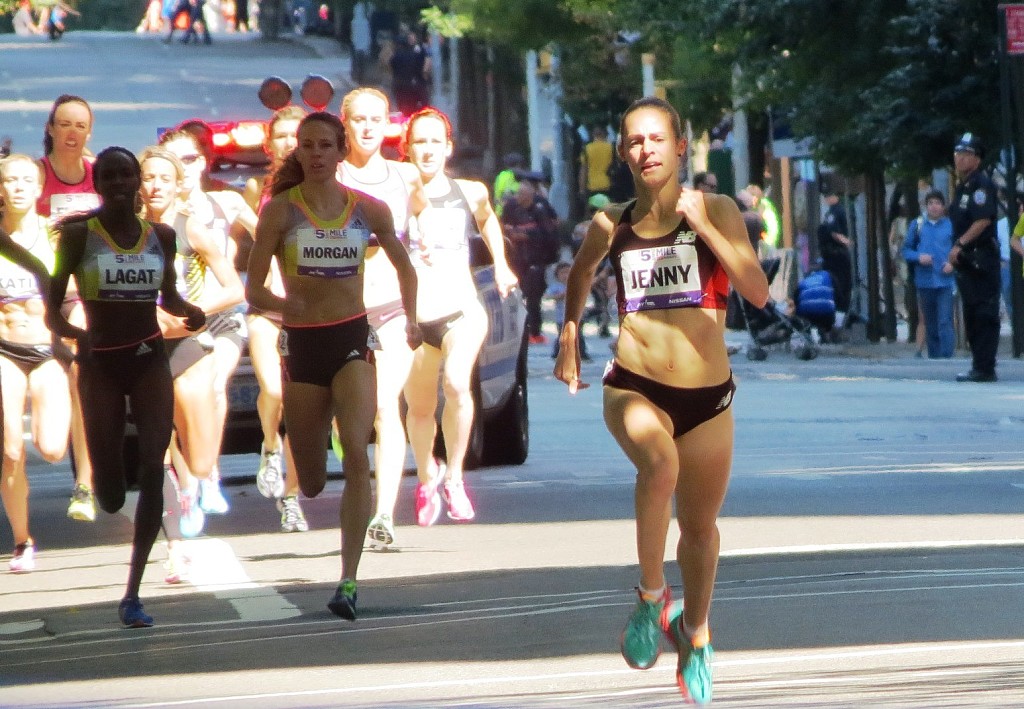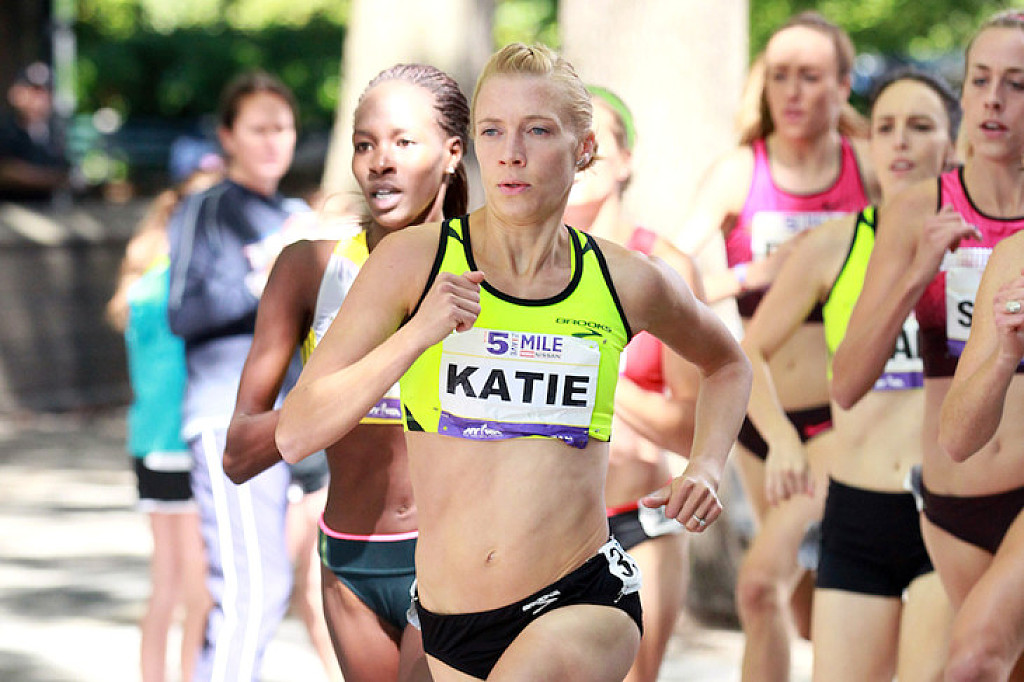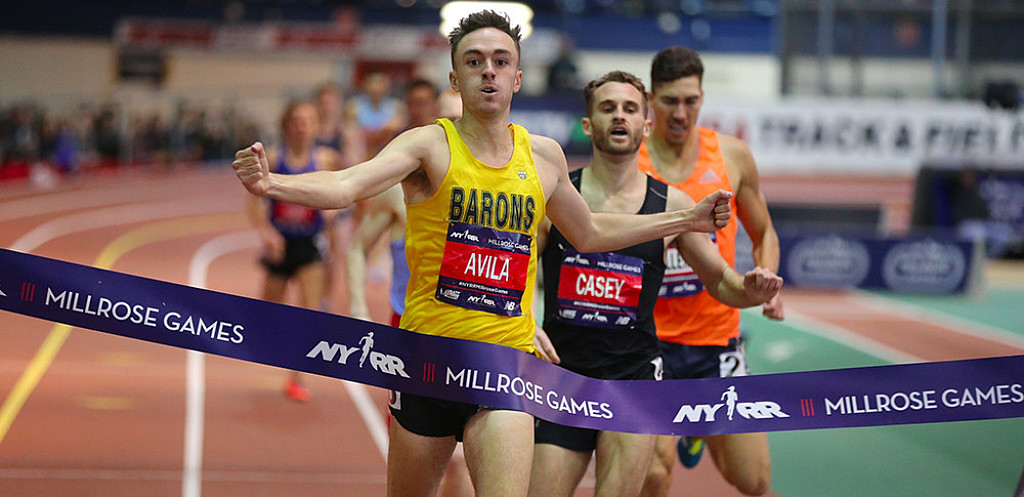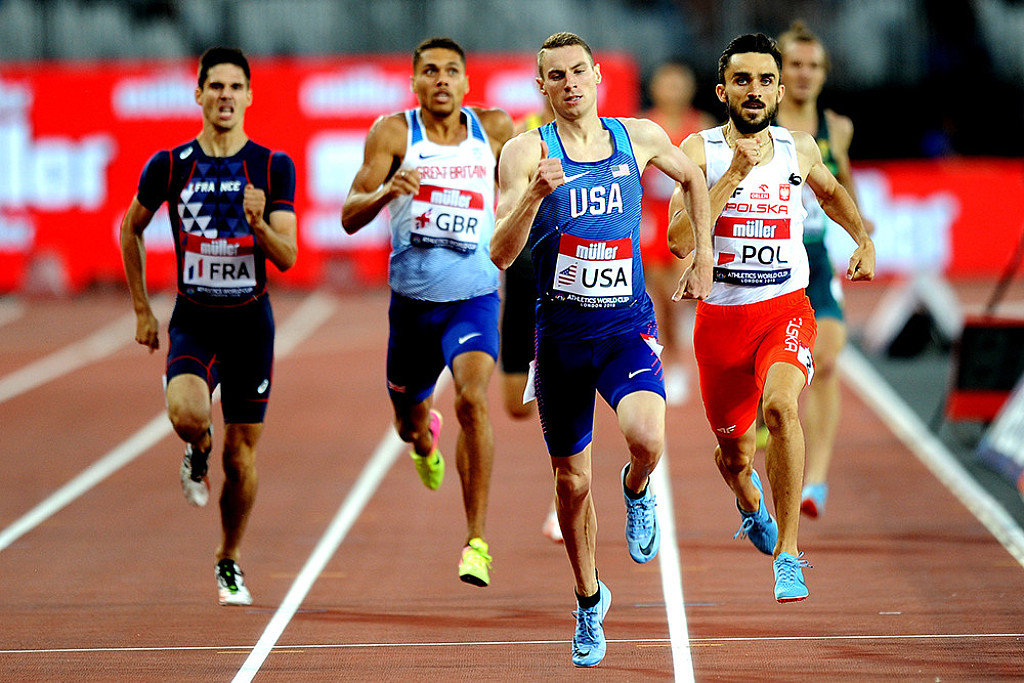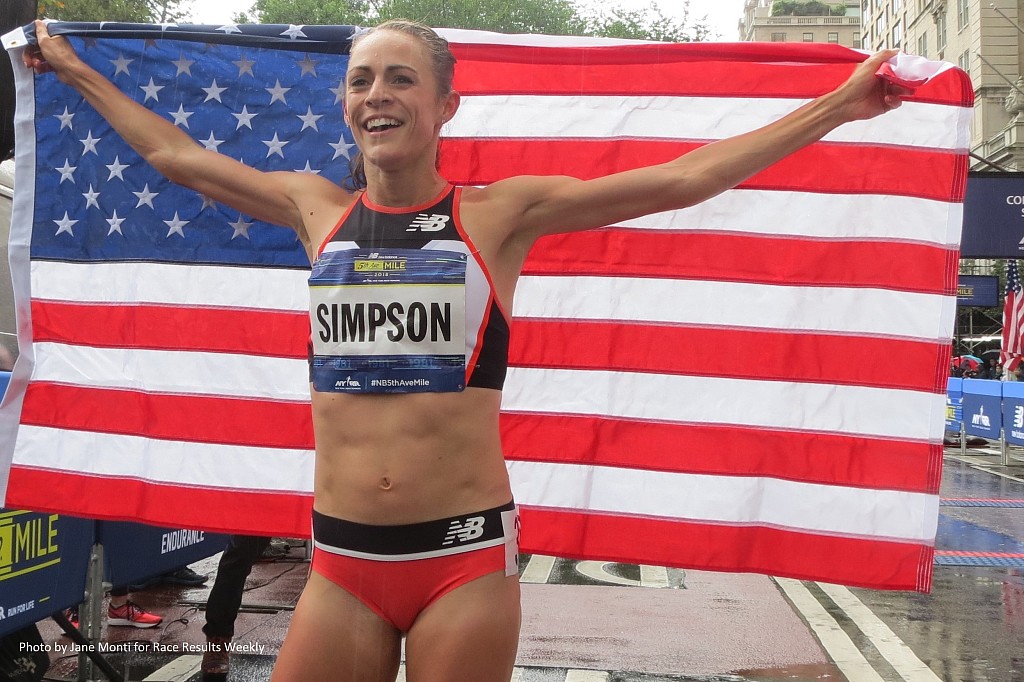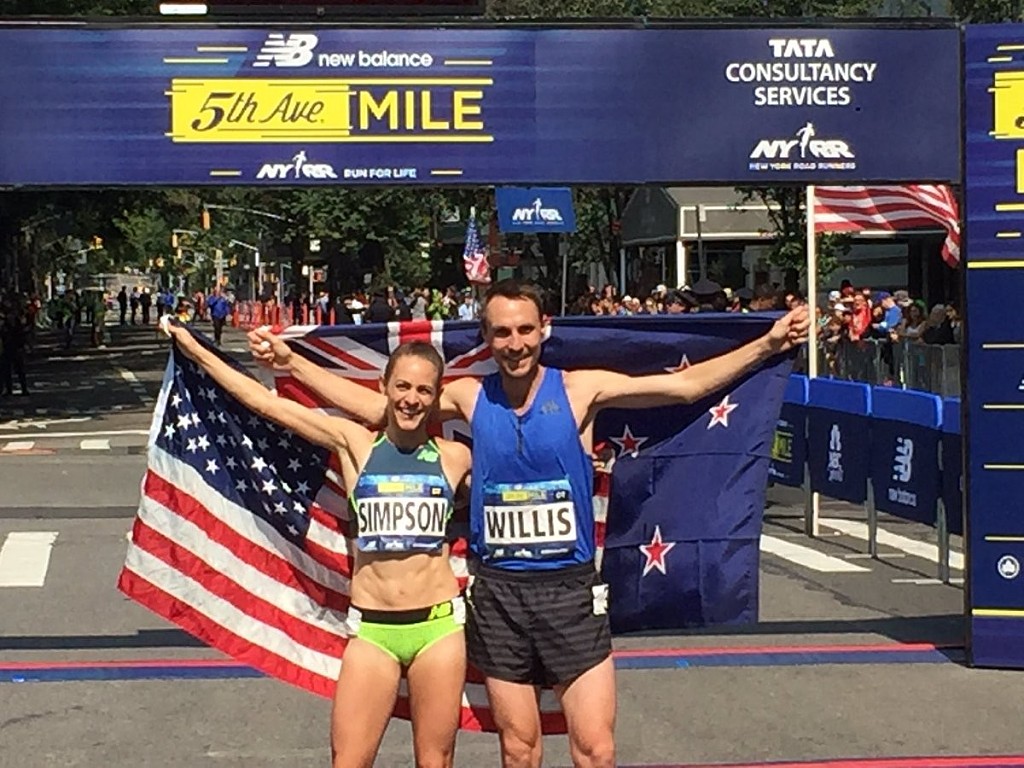Running News Daily
Running News Daily is edited by Bob Anderson. Send your news items to bob@mybestruns.com Advertising opportunities available. Train the Kenyan Way at KATA Kenya and Portugal owned and operated by Bob Anderson. Be sure to catch our movie A Long Run the movie KATA Running Camps and KATA Potato Farms - 31 now open in Kenya! https://kata.ke/
Index to Daily Posts · Sign Up For Updates · Run The World Feed
Articles tagged #Nick Willis
Today's Running News
Setting running goals when you’re slowing down
Time waits for no one, as those of us who obsess over chip times know too well. Much of the thrill and focus of running boils down to besting ourselves, and that usually means covering the same courses and distances faster than we ever have before.
But there comes a time when we are no longer able to outrun ourselves. Age catches up, and at some point it becomes painfully clear that our fastest days are behind us.
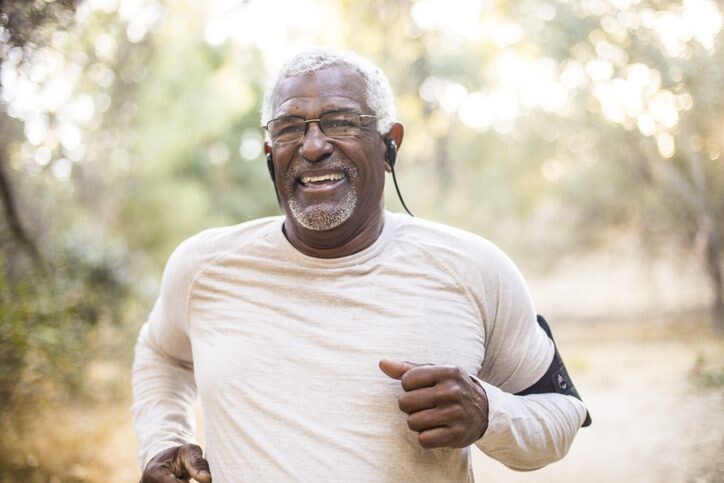
But slowing down doesn’t mean all our PBs are suddenly set in stone or that we’re unable to achieve new firsts as runners. As we mature as runners, so too can the nature of our goals. Stop the clock and consider these alternatives to time-centric goalsetting
Go the distance
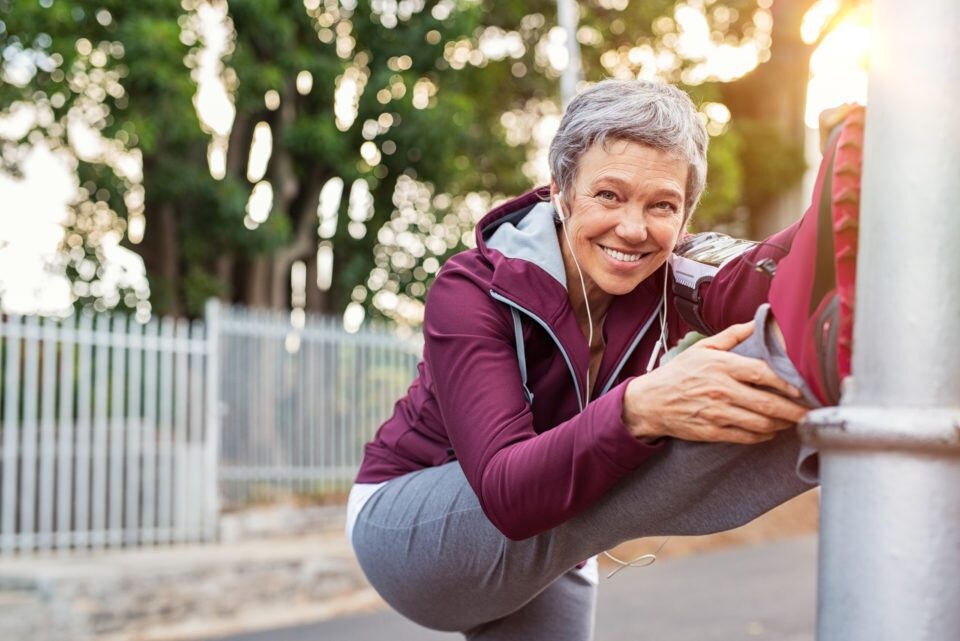
Running to set a personal best based on distance can add depth and variety to goalsetting. Going farther than you ever have is a challenge equally suited to longtime runners who have been building their fitness and endurance over years and decades, and fledgling runners who are taking up the activity later in life. The beauty of distance-based goalsetting is that it invites creativity. You might want to challenge yourself to finish your first ultra. Those more inclined to stick to shorter routes might find weekly, monthly or yearly distance goals a better fit. Runners in their retirement years who may now have more opportunities to travel can try smashing their record for most miles run outside Canada in a single year. Couples who have more time to connect can strive for new records for distances run together. Distance goals can be tailored to meet just about any runner’s strengths and schedule.
Get on a hot streak
Being consistent is both one of running’s greatest virtues and steepest challenges. Aiming to see a streak through to a new PB can really test your mettle, but it’s a goal that’s accessible to runners of all abilities. Streak-setting doesn’t exclude the super-speedy, like New Zealand’s Nick Willis, who last year marked his 20th straight year of running a sub-four-minute mile. That said, successful streaks can be a well-earned source of pride for runners who stick with running 1 km every day for a month, or 10 km every month of the year. Like distance-focused goals, streak targets are limited only by a runner’s imagination.
Consider non-performance goals
Slowing down offers us an opportunity to reflect on our relationship with running and to consider ways to make it deeper and more meaningful. An option worth considering is making the shift to a more supportive role. This might mean crewing a friend or family member’s attempt at an ultra-marathon, or dispensing water or medals as a volunteer at an upcoming half-marathon. Volunteering can also be a pathway to becoming a vital part of a world-famous race you always wanted to experience in-person but never got the chance to as a competitor.
by Paul Baswick
Login to leave a comment
The craziest active streaks in running
On Jan. 29, New Zealand’s Nick Willis ran another sub-4 minute mile at the NYC Millrose Games for the 20th consecutive year. This achievement is something only a few runners have come close to, which has sparked us to find the craziest active running streaks.
Nick Willis – 20 years of sub-4 minute miles
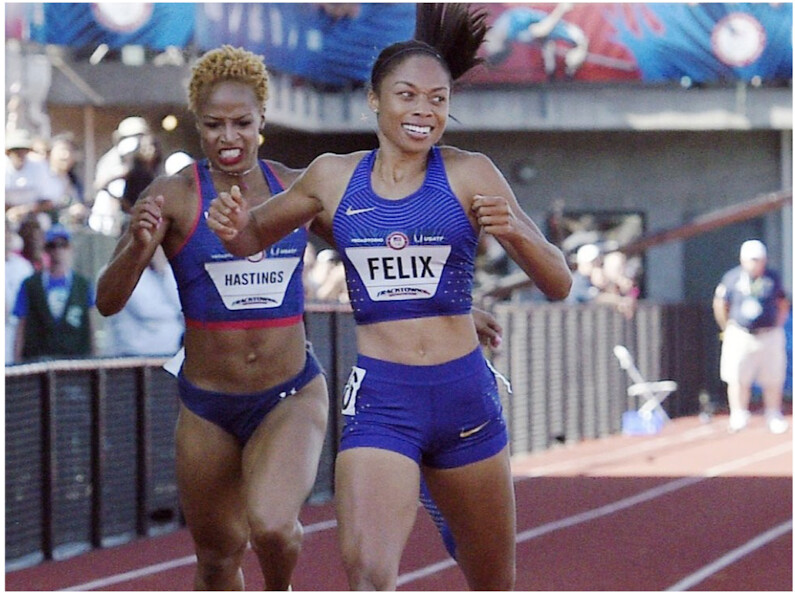
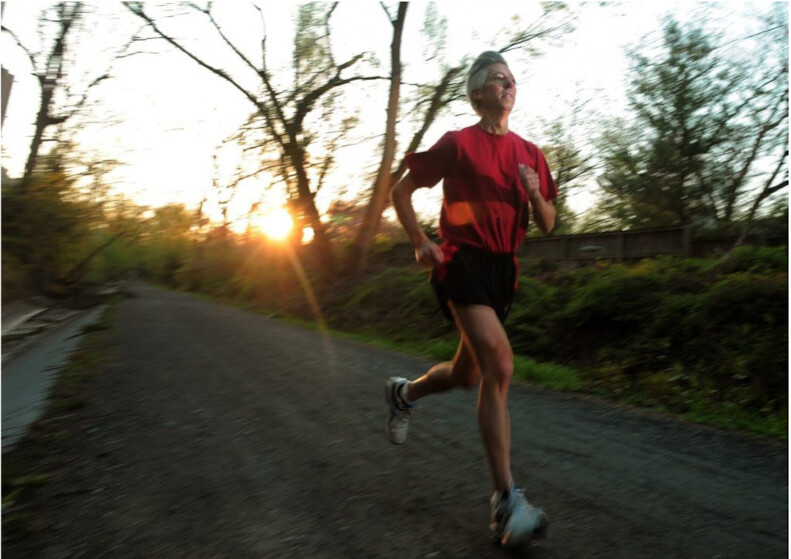
Willis first ran sub-4 during his undergrad at the University of Michigan in 2003 (3:58.15). At last weekend’s Millrose Games, Willis broke four minutes for the 63rd time in his career (3:59.71), which marked the 20th consecutive year he has run sub-4 miles. Willis is New Zealand’s only two-time Olympic medallist in the 1,500 metres, winning a silver medal in Beijing and bronze in Rio. In 2020, Willis passed his countryman, Sir John Walker, who previously held the consecutive sub-4 mile record of 18 years.
Simon Laporte – 46 years of running every day
At 46 years, the Notre-Dame des Prairies, Que. runner holds the longest active run streak in Canada. Laporte began his streak on Nov. 27, 1975, and hasn’t missed a day since. The 70-year-old run streaker has no plans to stop anytime soon, and he is planning for his streak to reach 50 in 2025. The longest active streak in the world is held by Jon Sutherland of Utah. Sutherland’s run streak of 52.7 years recently passed the legendary record set by Ron Hill (52.1) last year.
Streak Runners International (SRI) says for runs to qualify as a streak, they must cover at least one mile (1.61 kilometres) each day. The run may occur on the road, track, trails, or treadmill, but a minimum of one mile must be completed.
Lois Bastien – 41.8 years of running every day
Bastien holds the longest-standing women’s run streak record, at 42 years. She is now 79 and still runs every day in her home state of Florida.
Ben Beach – 54 consecutive Boston Marathons
Although Beach does not have the record for most Boston Marathon finishes (58), the 72-year-old marathoner does have the record for most consecutive Boston Marathons (54). Beach ran his first Boston in 1967 when he was 18. This year, Beach completed his 54th consecutive Boston Marathon, finishing in 5:47:27.
Allyson Felix – Five straight Olympic Games with a medal in track and field
U.S. sprinter Allyson Felix is one of the greatest female Olympians ever. She has not only represented her country at five straight Olympic Games, but she has also medalled at all of them (seven gold, three silver and one bronze) – a feat that no other female athlete has accomplished in track and field. Although Felix intended that Tokyo would be her last Olympics, her streak will remain active until Paris 2024, where Jamaican sprinter Shelly-Ann Fraser-Pryce will get the chance to equal her at five consecutive Olympics with a medal.
Karl Meltzer – a 20-year streak of winning a 100-mile race
Meltzer, 54, has been on the elite ultramarathon scene for more than 20 years. With his most recent win this year at the Beast of the East 100-miler, he has won a 100-miler for 20 consecutive years, bringing his career total to 45 wins over 100 miles. This is an unprecedented number, and the only person who can top it (for now, at least) is Meltzer himself.
by Running Magazine
Login to leave a comment
Nick Willis runs sub-four minute mile for 20th consecutive year
Nick Willis ran a sub-four minute mile at the Millrose Games in New York- 20 seasons after first breaking the barrier in 2003.
New Zealand track and field great Nick Willis has earned $25,000 for an athletics charity after completing 20 years of sub-four minute miles.
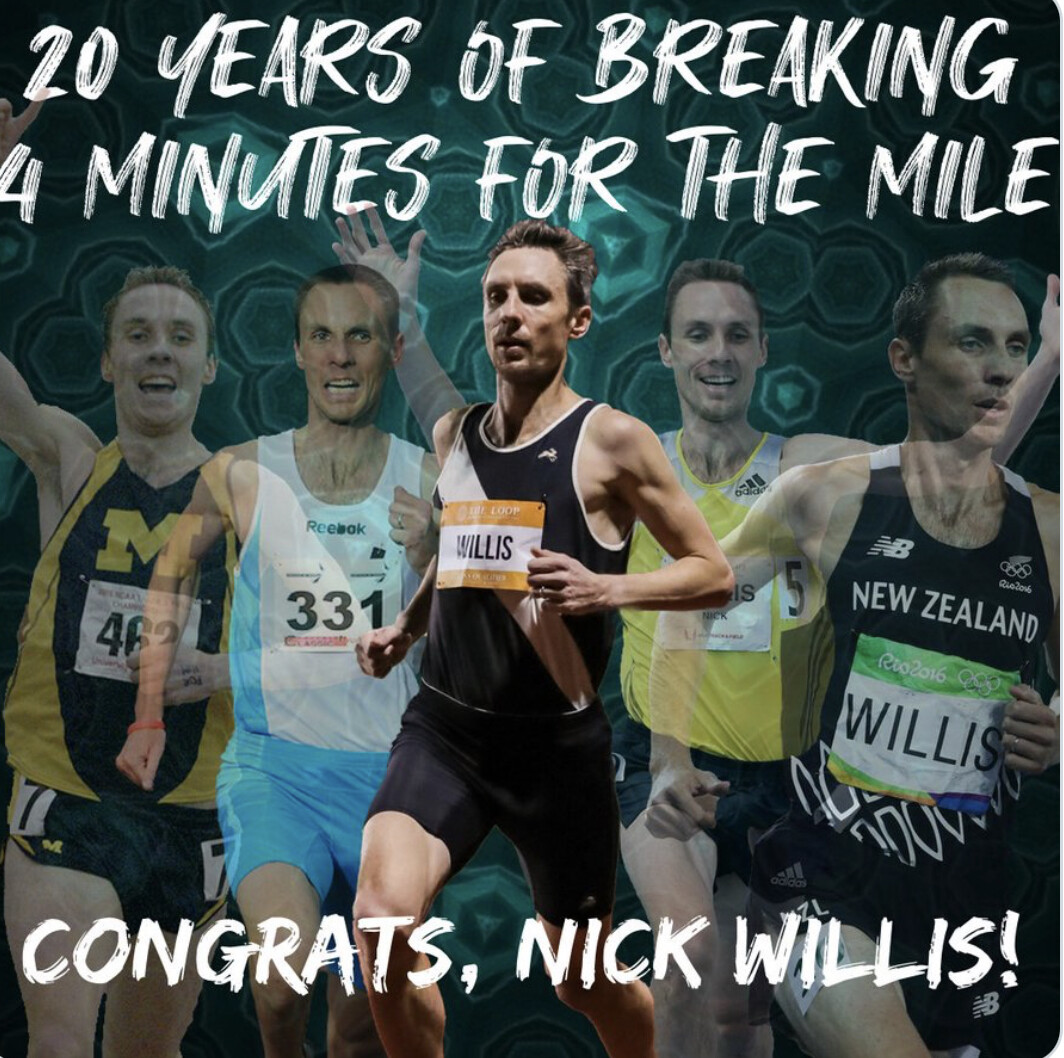
The 38-year-old finished ninth in the Wanamaker men’s mile at the Millrose Games indoor meet in New York City on Saturday January 29 in 3min 59.7sec.
It was in 2006 that Willis experienced international success for the first time, claiming 1500m gold at the Commonwealth Games in 3:38.49 ahead of Canada’s Nathan Brannen and Australia’s Mark Fountain. That same year, he lowered his mile personal best to 3:52.75.
In 2007, Willis made his first world 1500m final, placing 10th in Osaka in 3:36.13.
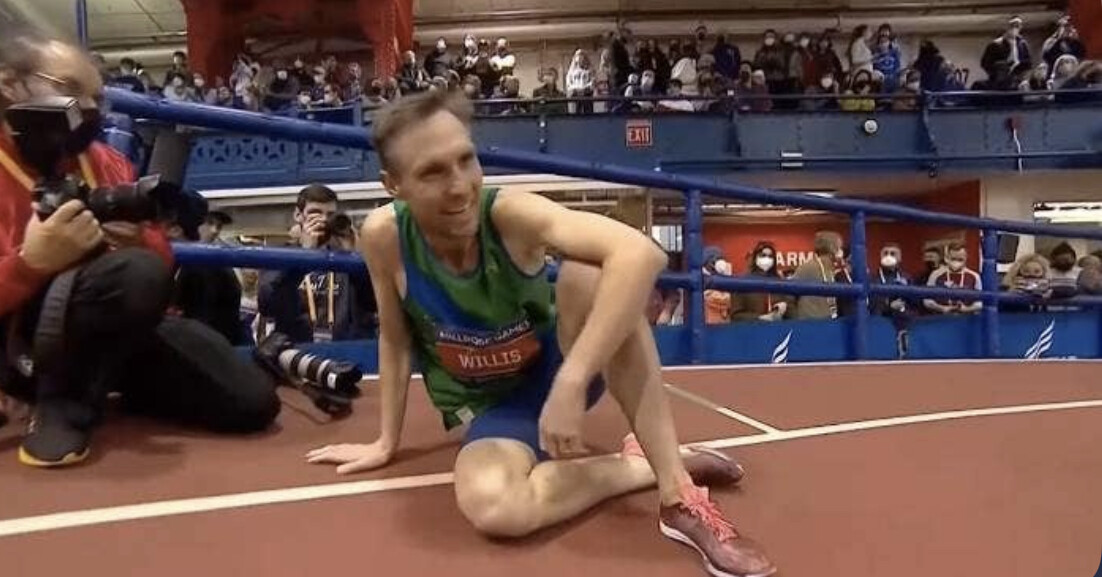
The following year, Willis ran what he considers one of his best races to improve his mile personal best to 3:50.66, finishing second behind Kenya’s Shadrack Korir at the Prefontaine Classic in Eugene, Oregon. Two months after that, he went on to claim 1500m silver at the Beijing Olympics in China.
At the following 2012 Olympic Games, Willis had the privilege of being his country’s flag bearer during the opening ceremony held at the London Stadium. He finished ninth in the Olympic 1500m final and had a season's best of 3:51.77 for the mile.
In 2014 at the Glasgow Commonwealth Games, Willis earned 1500m bronze, his third straight Commonwealth medal after the one he had taken in Delhi four years prior. It was also in 2014 that he set his lifetime best of 3:49.83 in the mile, which stood as the Oceanian record until July 2021.
In 2015, Willis clocked a still-standing Oceanian record of 3:51.46 for the indoor mile, and a national 1500m record of 3:29.66 at the Herculis Diamond League meeting in Monaco. That same year he finished sixth with 3:35.46 in the 1500m final at the World Championships in Beijing, his best placing in the competition.
The following year, Willis added two global medals to his tally with a 1500m bronze at the World Indoor Championships in Portland and an Olympic 1500m bronze in Rio.
At 38, Willis was the oldest athlete in the 1500m field at the Tokyo Olympics, where he placed ninth in his semifinal in a season’s best of 3:35.41.
Earlier in 2021, he had already broken the record of 19 consecutive years of sub-four-minute miles. And he finally went on to improve that record to 20 on 29 January 2022 with his 3:59.71 run.
by World Athletics
Login to leave a comment
NYRR Millrose Games
The Pinnacle of Indoor Track & Field The NYRR Millrose Games, first held in 1908, remains the premier indoor track and field competition in the United States. The 2025 edition will once again bring the world’s top professional, collegiate, and high school athletes to New York City for a day of thrilling competition. Hosted at the New Balance Track &...
more...Josh Kerr and Ollie Hoare to clash in men's Millrose mile
Olympic 1500m bronze medalist Josh Kerr and Olympic finalist Ollie Hoare will lead the charge for the WHOOP Men’s Wanamaker Mile at the 114th Millrose Games.
Kerr became Great Britain's second fastest ever 1500m runner with his 3:29.05 medal-winning run in Tokyo. While competing at the University of New Mexico, Kerr was the 2018 NCAA champion in the mile.
“The Wanamaker Mile has always been a staple in my indoor season, there is no race like it,” said Kerr. “I’m rested and ready to get ‘stuck in’ after a successful Olympics.”
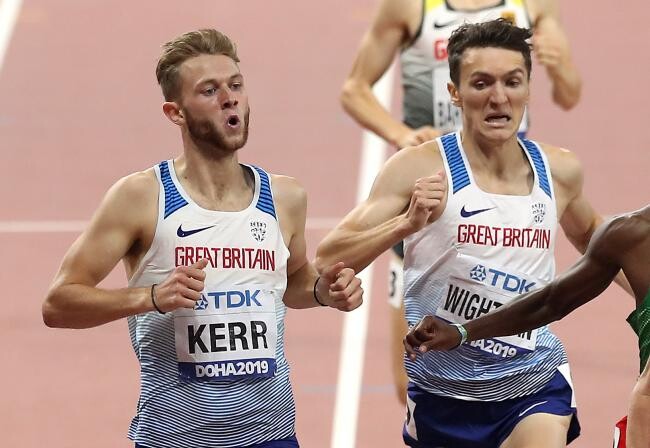
Australia's Hoare, meanwhile, placed second in the 2020 Wanamaker Mile and reached the Olympic final in Tokyo this past summer. He was the 2018 NCAA 1500m champion while at the University of Wisconsin, taking down Kerr in the process.
“The Wanamaker Mile is one of the most prestigious indoor mile races in the world,” said Hoare. “To be able to go and compete again for the third time in this event is a privilege.
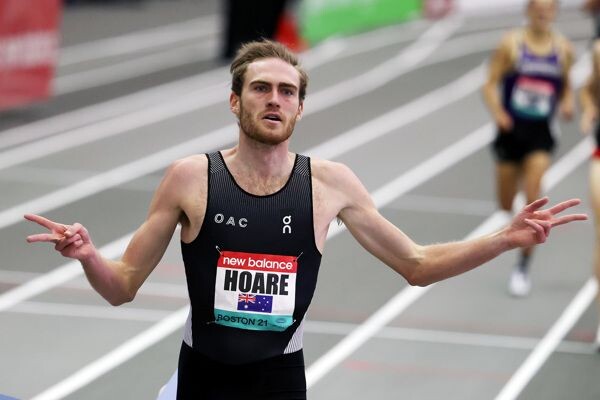
"Coach (Dathan Ritzenhein) and I are happy with where I am right now and I'm confident that I can take on whatever comes at me. Don't be surprised if you see some very fast mile times come out of New York.”
Five-time Olympian Nick Willis of New Zealand will also join the mix. The 38-year-old, who has finished as runner-up at the Wanamaker Mile three times, will be trying for a record 20th consecutive year of running a sub-four-minute mile.
There are talented US runners in the field, led by 2016 Olympic 800m bronze medallist Clayton Murphy, and he will be joined by 18-year-old Hobbs Kessler and world finalist Craig Engels, as well as Ireland's Andrew Coscoran and Canada's Charles Philibert-Thiboutot.
Rounding out the field will be Mario Garcia Romo, Henry Wynne and Colby Alexander.
Other top athletes so far announced for the Millrose Games include 2016 world indoor 60m champion Trayvon Bromell, world 100m hurdles record-holder Kendra Harrison, Olympic shot put champion Ryan Crouser, world shot put champion Joe Kovacs, Olympic 800m champion Athing Mu, Olympic pole vault champion Katie Nageotte and world indoor pole vault champion Sandi Morris.
by World Athletics
Login to leave a comment
NYRR Millrose Games
The Pinnacle of Indoor Track & Field The NYRR Millrose Games, first held in 1908, remains the premier indoor track and field competition in the United States. The 2025 edition will once again bring the world’s top professional, collegiate, and high school athletes to New York City for a day of thrilling competition. Hosted at the New Balance Track &...
more...Two-time Olympic medalist Nick Willis’ advice to injured runners
New Zealand’s Nick Willis is a two-time Olympic medalist whose elite running career has lasted more than 20 years and is still going strong. With a resume like that, it’s safe to say the guy has probably had a few injuries throughout his time as a runner, so when he offers his advice on how to deal with the aches and pains that come with the sport, runners everywhere would do well to listen up.
Recently, he took to Twitter to do exactly that, and his advice is something runners of all levels should take to heart.
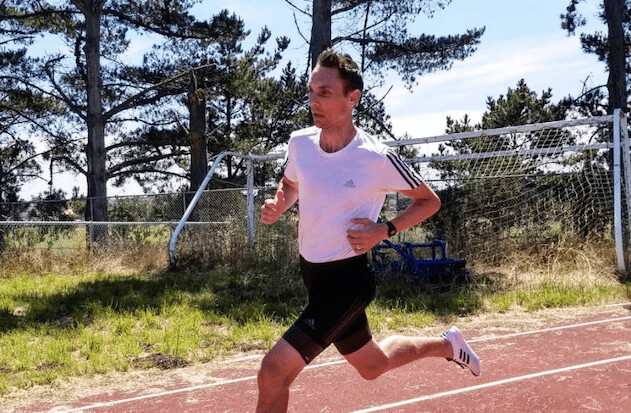
Through a series of Tweets, Willis described a recent calf injury he sustained while running on a slippery path in the rain. When dealing with an injury, most runners’ first instinct is to foam roll, stretch and massage right away, but that’s not what the running veteran did: instead, he stopped running immediately and started doing strength work.
More specifically, he began doing three sets of 20 calf raises, three times per day. He began with just his body weight, eventually adding weight as he got stronger. During that time, he began running every second day, stopping as soon as he felt his calf cramping up again, which was at the 15-minute mark for his first run. As he continued to diligently do his calf raises, he was able to increase the length of his run every time he hit the road by 10 minutes, until after 10 days, he was able to do a full 60-minute run.
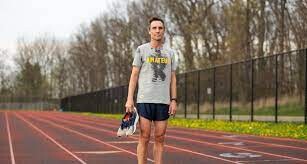
Here is where the important part comes in: it was not until after 12 days that he finally went and got some massage done, which he knew would act as a diagnostic tool to see how far his injury had improved. If the pain was too much during the massage, he knew there was still inflammation there and he wasn’t yet in the clear.
Fortunately for him, the pain subsided and the massage helped a lot, and he believes that waiting nearly two weeks before getting any massage done was the key to his success. Any earlier, he believes, would have been counter-productive. Biomechanist and ultrarunner Geoff Burns weighed in on the thread, wholeheartedly agreeing with Willis. He points out that a big mistake many runners make is overly treating an injury in the first few days it appears, and stretching, poking, testing and massaging something that hurts will likely only increase whatever structural damage has already occurred. In other words, “wait for the snake to stop hissing,” he says.
Of course, not every injury can be solved in a couple of weeks by doing calf raises, but the takeaway here is that often, when injury strikes, we tend to panic and want to do everything we can to fix it right away. While this is understandable, we’re better off calming down, giving our bodies a break and taking things one step at a time. In most cases, this will ultimately speed up the recovery process and get you back on the road sooner.
by Brittany Hambleton
Login to leave a comment
The wild and crazy men’s1500m at Tokyo Olympics
In heat one Belgium’s Ismael Debjani won to be fastest overall in 3:36.00 with a 53.4 last lap, just ahead of world champion Timothy Cheruiyot (3:36.01), Oliver Hoare (3:36.09), US trials winner Cole Hocker (3:36.16), Abdelatif Sadiki (3:36.23) and Michal Rozmys (3:36.28) who qualified automatically.
Rozmys had been six tenths of a second behind Kerr as he hit the straight but ran a 12.9 last 100m to the Scot’s 13.5 to catch him on the line, meaning the British champion missed out on automatic qualification by one hundredth of a second as he struggled in the closing stages.
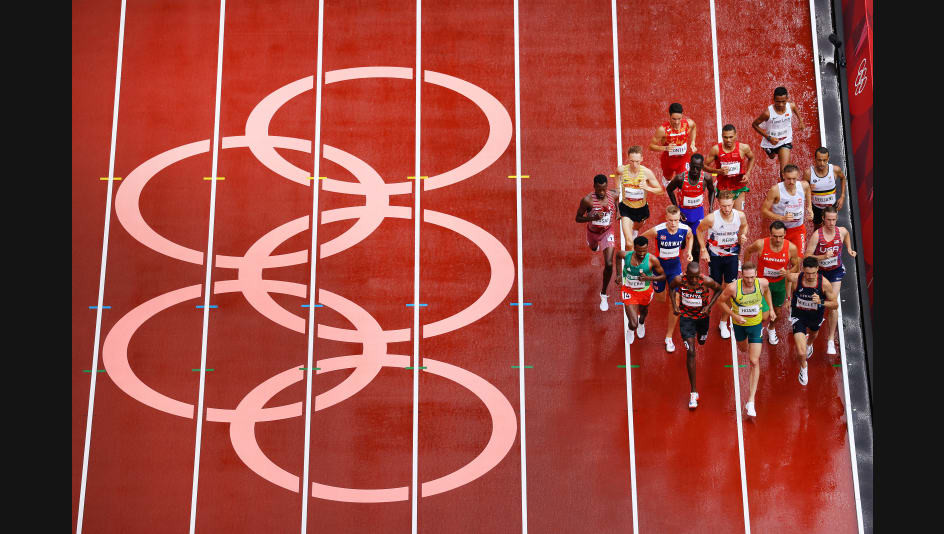
Kerr said: “I was really frustrated with my positioning and there was some shoving and I made a hard move at 500m to go. Then, at 200m to go, I felt I was going to pay for this in the home stretch. I was just trying to stay focused and push all the way, but it just wasn’t a good run for me. I am fit and ready and I have had no problems. There are just no excuses for that. I just raced it badly.”
Kerr must have been relieved as heat two was run at nowhere near the same pace. The field ambled through 400m in 62.4 and 800m in 2:02.9, only really coming to life on the last lap as Kenyan Abel Kipsang covered it in 52.8 to win in 3:40.68.
Second was defending champion Matt Centrowitz (3:41.12), just ahead of Wightman (3:41.18) who ran his last 400m in 53.2 and 200m in 26.3. Also qualifying easily were Azeddine Habz (3:41.24), Samuel Zeleke (3:41.63) and Charles Grethen (3:41.92).
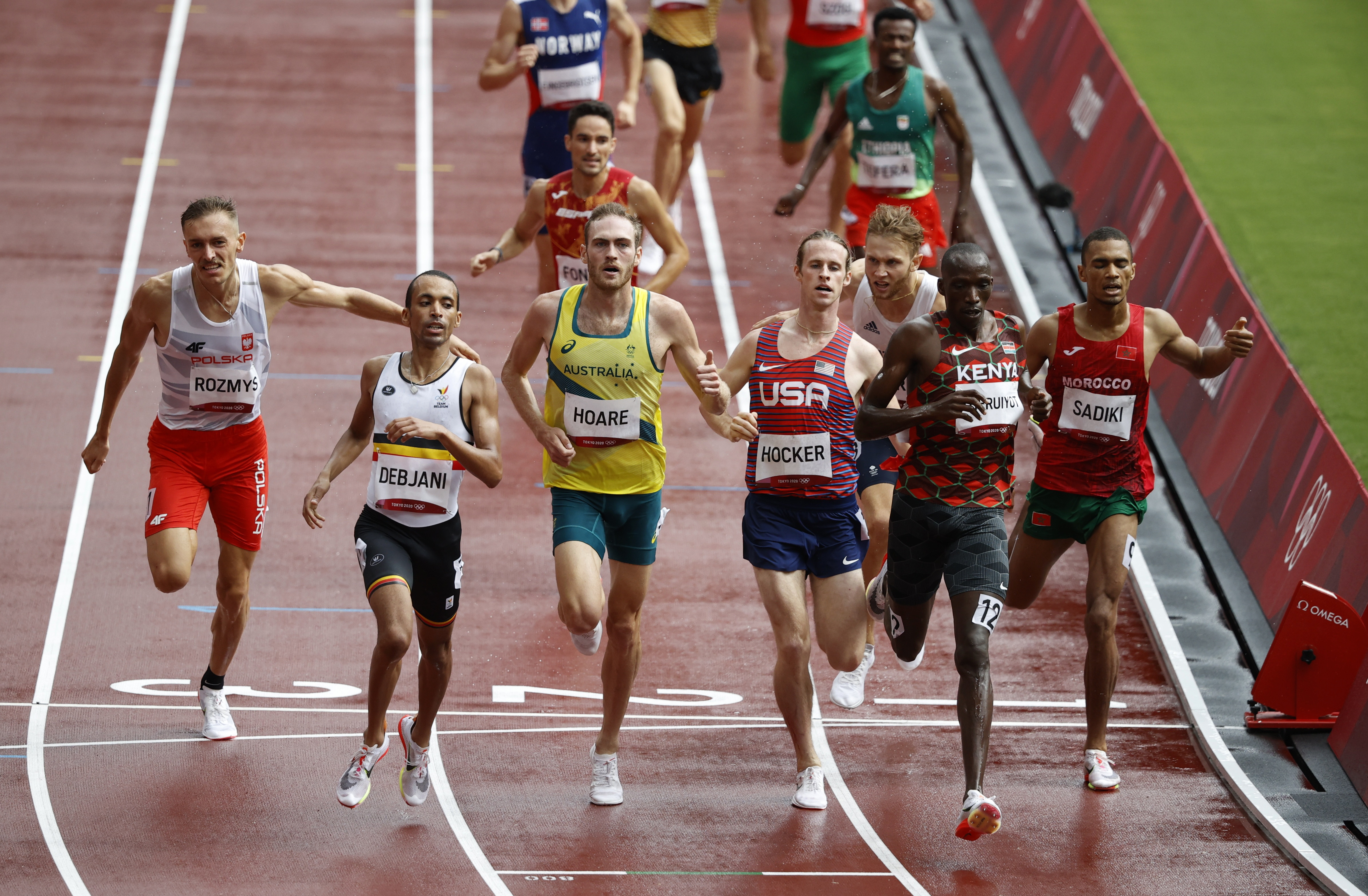
Marcin Lewandowski fell on the last lap and he jogged home but was added to the qualifiers by the judges after the event.
Wightman said: “It’s the most nerve-racking round, isn’t it? You’re worried you’re going to be embarrassed. I’m glad I managed to stay on my feet and get through. I had a smooth enough ride. I think I got a spike wound, had a few pushes but there was the fall which I’m glad I didn’t even notice until the end.
“The heats are the worst, because you’ve come all this way and no-one wants to get knocked out in the heat or expects to get knocked out in the heat, so you just want to get past and know how you are running to get through to the semi-final.”
The third heat was faster but, with six fastest loser spots, it did mean there would have to be 12 quicker than 3:36.29 for Kerr to exit and, in the end, there were only two.
The first lap was a slow 61.7 before Stewart McSweyn kicked on. The Australian completed the second lap in a lively 56.9 and the third in a top class 55.1, with only Heyward still in contact as the pair went through 1200m in 2:53.7 and 2:53.9, holding a big gap over the pack led by Robert Farken in 2:55.1.
Heyward passed McSweyn in the straight and won clearly in 3:36.14, having eased around his last lap in 55.9 and covered his last 1200m inside 2:50. Ethiopia’s Tedesse Lemi, who had been 12th at the bell, ran a 53.9 last lap to finish second in 3:36.26 and he had covered his last 1200m in 2:48.9.
McSweyn (3:36.39), Jakob Ingebrigtsen (an anonymous 3:36.49), Farken (3:36.71) and Adel Mechaal (3:36.74) completed the automatic qualifiers.
Double Olympic medallist Nick Willis (3:36.88), Andrew Coscoran (3:37.11), Ayanleh Souleiman (3:37.25) and Kenyan trials winner Charles Simotwo (3:37.26) qualified by time as they joined Kerr and Ignacio Fontes (3:36.95) as fastest losers.
Soufiane El Bakkali, who won the 3000m steeplechase title the previous day, was in contention until 200m to go but pulled out.
Heyward said: “I don’t think it could have gone much better. Safely through, that’s the main thing. You have to have a few scenarios, you have to be versatile. It could be fast, could be slow, so you’ve got to be ready for that. I think I always give my best performances in championships and I hope that showed a glimpse of what I can do.
“You can’t take anything for granted at the Olympics, you’ve got to be prepared for anything, and I was prepared to run super hard today, so that was my mindset going in. Luckily because I didn’t have to run that hard it felt quite comfortable, so it was good.”
by Athletics Weekly
Login to leave a comment
Tokyo 2020 Olympic Games
Fifty-six years after having organized the Olympic Games, the Japanese capital will be hosting a Summer edition for the second time, originally scheduled from July 24 to August 9, 2020, the games were postponed due to coronavirus outbreak, the postponed Tokyo Olympics will be held from July 23 to August 8 in 2021, according to the International Olympic Committee decision. ...
more...New Zealand has confirmed a record 211-strong team for Tokyo 2020
The New Zealand Olympic Committee (NZOC) has confirmed a record 211 athletes will represent the nation at delayed Olympic Games here in the Japanese capital.
The team is New Zealand’s largest at the Games, surpassing the 199-athlete delegation that travelled to Rio 2016.
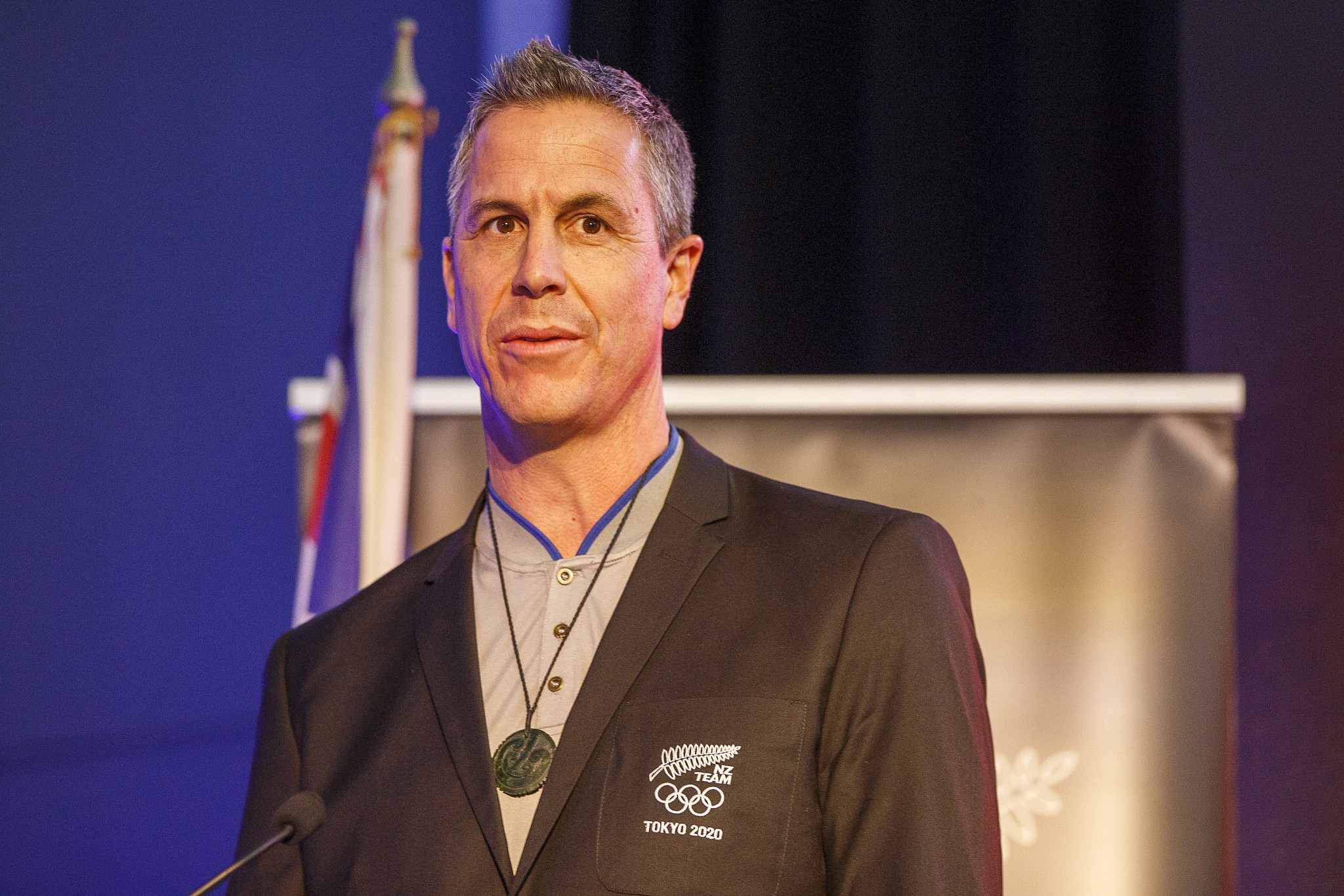
The NZOC revealed that the team includes 110 men and 101 women, with the country having representatives in 22 sports at the Games.
This includes the sports of karate and surfing, due to make their Olympic debuts at Tokyo 2020.
A total of 33 athletes are of MÄori descent.
Most of the New Zealand team will be competing at their first Olympics with 118 having previously never participated at the Games.
The remaining 93 have already been to one or more Games, including two-time Olympic shot put gold medallist Dame Valerie Adams.
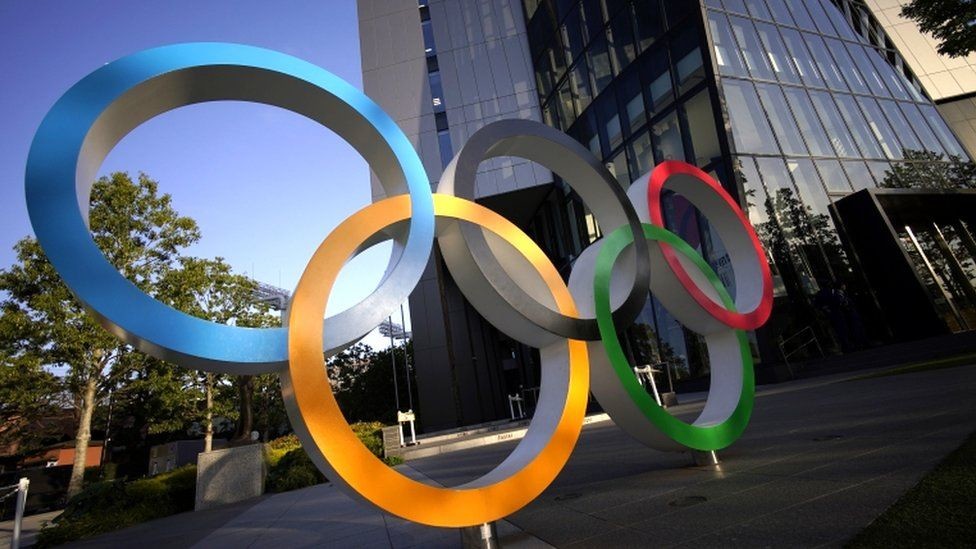
Dame Valerie is set to become the second female athlete to represent New Zealand at five Olympic Games, matching windsurfer Barbara Kendall.
Nick Willis, winner of the Beijing 2008 Olympic silver and Rio 2016 bronze in the men’s 1500 metres, will also compete at a fifth Olympic Games.
Swimmer Erika Fairweather is the youngest member of the team aged 17, with equestrian jumping athlete Bruce Goodin the oldest at 51.
Controversial weightlifter Laurel Hubbard features among the delegation and is set to be the first transgender athlete to compete at the Games as their associated gender.
Women’s rugby sevens captain Sarah Hirini and two-time Olympic rowing champion Hamish Bond were confirmed as New Zealand’s flagbearers Opening Ceremony earlier this month.
The Games is largely set to take place behind closed doors due to the COVID-19 pandemic, leading to the Japanese Government introducing tighter restrictions on the host city.
New Zealand’s Chef de Mission Rob Waddell praised the resilience of the Olympic team amid the uncertainty caused by the COVID-19 pandemic, which led to a one-year postponement of the Games last year.
"This Olympic build-up has been extremely challenging and unique," Waddell, an Olympic rowing gold medallist in the single sculls at Sydney 2000, said.
"I’d like to thank all 211 athletes for the grit and determination they’ve shown to make it to these postponed Games.
"We’re extremely proud of the team and the way they’ve handled all the uncertainty.
"It’s now time to focus on wearing the fern and representing New Zealand to the best of our abilities in Tokyo."
Waddell and an advance team arrived here last week.
The advance team are setting up New Zealand’s area in the Athletes’ Village prior to their arrival for competitions.
Participants are required to follow restrictions outlined in playbooks produced by Tokyo 2020 and the International Olympic Committee.
This includes quarantine periods and movements being restricted to activity plan for the first 14 days.
"We’re working really hard to create a strong performance environment in our section of the Village which allows the athletes to perform to their peak," Waddell said.
"We’re setting up our own high-performance gym, kitchen and health areas.
"We also have two shipping containers to offload which contain things like sporting equipment, hand sanitiser and cooling fans.
"We’ve been working really closely with our performance delivery partners High Performance Sport New Zealand to prepare our team for the heat.
"We've had athletes training in heat chambers and holding heat camps in hot and humid locations.
"We've also got specialist ice vests, slushy machines and heat protocols in place."
by Michael Pavitt
Login to leave a comment
Tokyo 2020 Olympic Games
Fifty-six years after having organized the Olympic Games, the Japanese capital will be hosting a Summer edition for the second time, originally scheduled from July 24 to August 9, 2020, the games were postponed due to coronavirus outbreak, the postponed Tokyo Olympics will be held from July 23 to August 8 in 2021, according to the International Olympic Committee decision. ...
more...Hobbs Kessler turns pro and has signed with Adidas
American record holder Hobbs Kessler has announced that he is turning pro and signing with Adidas. The 18-year-old from Ann Arbor, Mich., has had an incredible season, breaking the American high school indoor mile record (he ran 3:57.66 in February) and national U20 1,500m record (his 3:34.36 in late May bettered Jim Ryun‘s 55-year-old mark of 3:36.1). Kessler was set to join the track team at Northern Arizona University (NAU) this fall, but he now plans to only attend as a student.
Since his breakout performance in the indoor mile earlier this year, track fans have debated whether Kessler should turn pro. He committed to NAU last fall, but after such an incredible run (and continued success throughout the season), it became clearer and clearer that Kessler already has what it takes to compete as a professional.
In an interview with the website Track and Field News, Kessler said his mind was made up and that, despite his great runs this year, he was sure he would stick to the collegiate route. Then he went to the Portland Track Festival in May, when he ran his American U20 1,500m record, and he started to reconsider his options.

“The 3:34 was the turning point for all of this,” he said. “I’m in a position now that I don’t know that I will be in later, so I’m jumping on the opportunity that I have now and riding my momentum forward.” Kessler said he talked the decision over with multiple people from his family and team, and they all told him that going pro was the right call.
“It’s a bummer to miss out on the college [and] NCAA experience, but the positives outweigh the negatives,” he said. “Now I’m in a good position. My name is hot and I have a really good setup here running-wise and this gives me the ability to stay with my support system.”
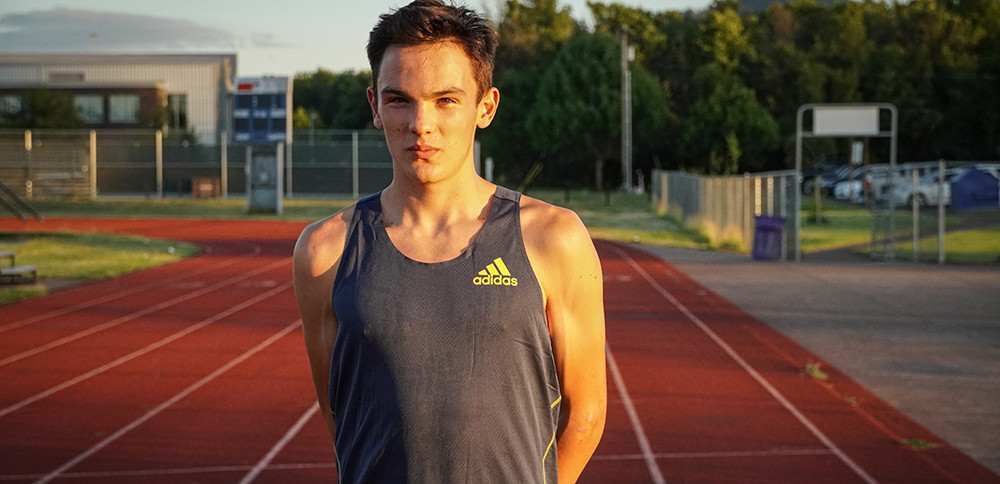
When asked about the prospect of turning pro in an interview with the Wall Street Journal, which occurred before his decision to sign with Adidas, Kessler said, “the benefits of going pro would have to outweigh missing the experience of going to college.” While he will be missing out on the NCAA experience, he is still going to attend NAU and live with members of the school track team.
Kessler currently trains in Ann Arbor with former University of Michigan coach Ron Warhurst in a crew with two-time Olympic medallist Nick Willis and other high-profile athletes. Kessler will continue to work with Warhurst as a pro, and he will return to Ann Arbor in the spring and summer when he’s not at school.
Kessler has had a year of many firsts, and he has another coming up on Thursday evening, when he will race the 1,500m at the U.S. Olympic Trials in Eugene, Ore. He qualified for the trials with his run in Portland last month, a result that gives him the fifth-best seed time in the entire field. The first round of the men’s 1,500m kicks off at 6 p.m. PT.
by Ben Snider-McGrath
Login to leave a comment
Some Veteran Pro Runners Are Making Less This Year, and They're Ditching the Sport
Many athletes are confronting a bleak financial reality. Some are quitting the sport entirely.
What do Noah Droddy, Ben True, and Andy Bayer have in common?
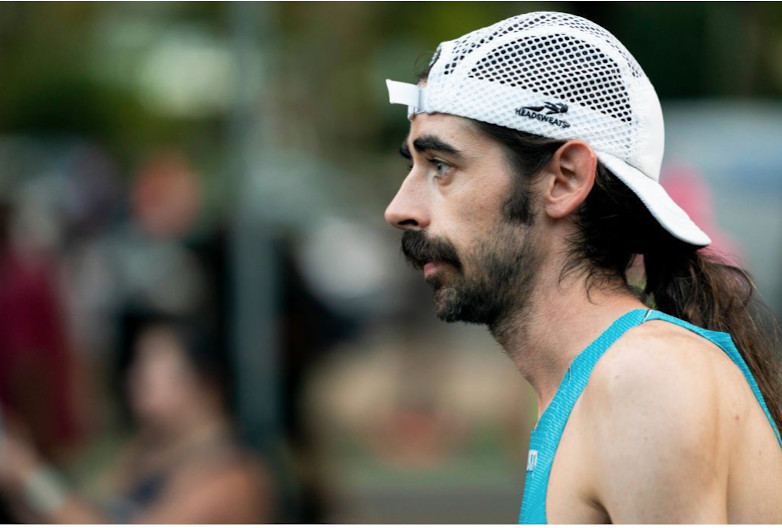
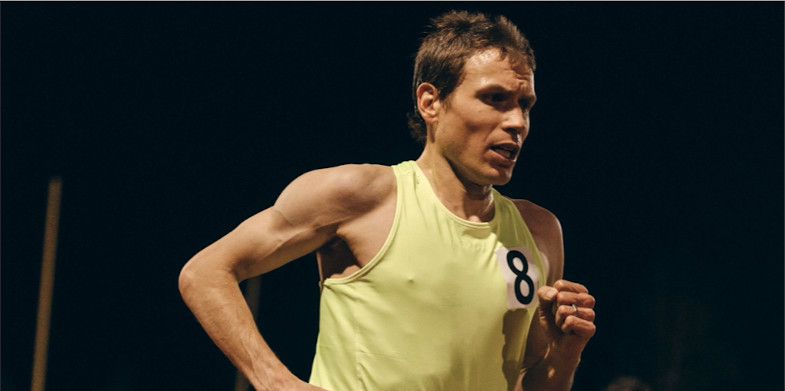
They’re all ranked among the top 10 Americans of all time in their events—Droddy in the marathon, True in the 10,000 meters, Bayer in the steeplechase.
How Much Do Pro Runners Make? For Some Veterans, It’s Less This Year
And they were all dropped by their sponsors at the end of 2020.
This news took a while to seep out—after all, athletes don’t tend to publicize it when their sponsors reduce their pay or stop supporting them altogether. But Droddy, 30, and True, 35, have been open about their status and confirmed it in calls with Runner’s World (both had been sponsored by Saucony), and Bayer told the Indy Star that Nike dropped him and he has left the sport, at age 31, for a job in software engineering.
Droddy—one of running’s most recognizable figures in races with his long hair, backward baseball cap, and habit of losing his lunch at marathon finish lines—summed up his situation in a tweet on February 19.
Is he right? Is it typical for top runners, at the height of their careers, to lose financial backing from shoe companies? Or is this an anomaly at the end of an unusual, pandemic-marred 15 months?
Runner’s World had conversations with eight athletes, four agents, two marketing employees at brands, and three coaches to get a sense of the current economics for athletes. They painted a complex picture.
Are most pro runners broke?
Many are just getting by. For years, America’s pro runners have been on shaky financial footing. With the exception of those who win global medals or major marathons, distance runners often struggle to earn enough money to pay for their essentials (rent and food), plus cover all their running-related expenses, such as coaching, travel to races and altitude camps, health care, gym membership, and massage.
Over the past year, the pandemic has erased lucrative racing opportunities. Additionally, shoe companies have been reevaluating their sports marketing budgets, from which runners are paid. Experts say that the result has been an increasing bifurcation between the sport’s haves and have nots.
The most successful, those destined for the Olympic team or starring on the roads, are earning generous base payments and bonuses for setting records or winning. Many of the rest are scraping by, with smaller contracts, if any, and they’re supplementing their shoe company earnings with jobs.
Running’s middle class, much like America’s, is shrinking.
The exception is runners who belong to a single-sponsor training group, like those in Flagstaff, Arizona (Hoka); Boston (New Balance); and Portland, Oregon (Nike). In those cases, coaching, travel, and training camp costs are absorbed by the club, easing the financial pressure on athletes and making it possible for them to pursue the dream.
Brands these days appear to be more eager to devote dollars to groups and the athletes who train with them, rather than individual athletes training on their own in different locations. That presents a quandary for midcareer runners who have achieved a level of success. Faced with the loss of a sponsorship, they aren’t always willing to pick up and move to a new town and a new coach.
What do contracts look like?
If you’re a top runner in the college ranks, and you’ve won multiple NCAA titles at the Division I level, shoe companies—Nike, Adidas, Brooks, Saucony, Hoka, and others—will usually come calling, offering more than $100,000 a year for multiple years, with a spot in a group or a stipend to pay your coach. Those companies are betting on those NCAA champions to be Olympians of the future.
Dani Jones, for instance, won three individual NCAA titles at the University of Colorado, and she signed with New Balance at the end of last year. Her agent, Hawi Keflezighi, said she entertained competing offers from other companies.
A midcareer athlete with a breakthrough performance—hitting the podium at a major marathon or making an Olympic team, for instance—might also be rewarded with a base contract worth $50,000 to $100,000.
The top sprinters earn even more (although their careers are typically shorter). Usain Bolt famously made millions, and Canadian sprinter Andre De Grasse was 21 when he signed a deal worth $11.25 million—before bonuses—from Puma in 2015, the Toronto Star reported.
The payouts drop significantly after that. Let’s say you’re a distance runner, but you haven’t been able to get a big win in college, although you’ve come close. The lucky ones are looking at deals for about $30,000 to $75,000 per year.
Your agent takes a 15 percent cut of that. And this base salary most often comes without benefits: no health insurance, no 401(k). As independent contractors, pro runners are paying all their own taxes. (In contrast, traditional full-time employees have half of their Social Security and Medicare taxes paid by the employer.)
Many young runners out of college join pro groups, and they’re not making anything beyond free gear and coaching. Others might get a stipend worth $10,000 or $12,000 a year.
The contracts typically sync with the Olympic calendar. At the end of 2020, many athletes’ contracts were expiring—even though the Olympics didn’t happen. That’s how Droddy, True, and Bayer were dropped. Shannon Rowbury, a three-time Olympian, told Track & Field News her deal with Nike was extended for one year, two if she makes the Olympic team this summer.
If an athlete has a good Olympics, the sponsoring company often has an option to extend the deal for an additional year, which includes the world track & field championships. It’s at the company’s discretion—not the athlete’s.
Parts of the sponsorship model appear to be changing, but slowly. When NAZ Elite announced a new deal with Hoka last fall, it included health insurance for the runners. Similarly, members of Hansons-Brooks in Rochester, Michigan, get health insurance if they work in the Hansons running specialty stores. And last May, Tracksmith brought Mary Cain and Nick Willis on as employees at the company—Cain in community engagement, Willis as athlete experience manager—with the plan that both would continue to train and race at an elite level.
Why doesn’t anyone know exactly how much runners are making?
As part of these deals, athletes have to sign non-disclosure agreements (NDAs), promising to keep the terms quiet. If an athlete violates the NDA, the sponsor can void the contract—or sue for breach of contract.
This is, in fact, similar to other sports. In basketball, LeBron James is being paid $39.2 million this season by the Los Angeles Lakers. But he also has an endorsement deal with Nike, and the exact structure of that is unknown.
In running, prize purses are publicized—$150,000 for winning the Boston Marathon, $25,000 for being the top American at New York in 2019, $75,000 for winning the Olympic Marathon Trials.
But as in other sports, the terms of the sponsor deals are kept mum. And appearance fees at major races, as well as time bonuses within those appearance fees, which represent a major source of income for road runners (mainly marathoners), are also mostly unknown.
Athletes feel that the silence around sponsor contracts and appearance fees puts them at a disadvantage—it’s hard to know their market value. Yes, they can—and do—have quiet conversations with peers about it. But lacking broad knowledge, they lack power.
And as a result, the industry is rife with rumors and assumptions. Athletes’ values are often inflated through the grapevine.
“I think it is very similar to the dynamic that would occur if no one knew the price of home sales,” Ian Dobson—a 2008 Olympian who ran for Adidas and Nike during his pro career, which ended in 2012—told Runner’s World. “How could you ever be confident in a sale price if you didn’t know what any other homes in your neighborhood were selling for? Granted, we don’t know every detail of every home sale in the neighborhood, but it’s certainly helpful to know in general terms the dollar amount that these are going for so that we can all understand what value our home might have.”
Also, athletes keep quiet when their circumstances change. They feel embarrassed. One athlete told Runner’s World, “No one in track wants to be the one to say, ‘I got dropped,’ or ‘I got reduced.’ It's all taboo.”
Even so, $30,000 is nothing to sneeze at—especially for a job that’s about pursuing individual goals.
No, it’s not. But not every contract is structured the same way.
Some pay that base amount, no matter what. Other contracts penalize athletes with reductions if, for instance, they don’t finish in the top three in the country in Track & Field News rankings, or if they get injured and can’t race a certain number of times per year.
That’s why numerous Nike athletes seemed to be eagerly seeking racing opportunities of any kind last summer amid the pandemic. Marathoner Amy Cragg raced a 400 meters at an intrasquad meet on July 31, and finished in 90.15 seconds—6:00 pace—presumably to check a box on her contract. On August 7, she ran 800 meters in 3:03.85. The record of those races are in her World Athletics profile.
A Nike spokeswoman, when asked about athletes racing in 2020 to meet contractual obligations, responded: “We do not comment on athlete contracts.”
Time bonuses, once seen as a reliable way to beef up athletes’ base payments, are also becoming less frequent or harder to hit, as shoe technology improves and fast times become more common, according to one agent.
What role do agents play?
For athletes who have never previously had a sponsorship deal, it’s almost impossible to secure one without the help of an agent, who can get in the door at all the major brands.
For American distance runners, there are nine main agents—all men—negotiating the deals (Keflezighi, Josh Cox, Paul Doyle, Ray Flynn, Chris Layne, Dan Lilot, Tom Ratcliffe, Ricky Simms, and Mark Wetmore). Karen Locke, one of the few female agents in track and field, represents a few distance runners among her roster of clients in field events.
Of course, all the prominent agents—who have multiple clients across multiple brands and at various stages of their athletic careers—have data about what athletes are worth. But they have a duty to each one to maintain confidentiality about the specifics of that deal.
Agents bring to their athletes a broad picture of the market and what each might command, providing advice to those considering offers: Yes, this a fair offer, a solid deal. Or no, you can do better.
They also help get athletes into competitive track races like the Diamond League and elsewhere, or into the World Marathon Majors. They can handle travel arrangements to meets and help to make sure records get ratified. Generally, their role is to go to bat for athletes, no matter what they need.
For their services, they take 15 percent of everything an athlete earns: sponsor deals, appearance fees, and prize money, no matter how small the race or winnings.
Agents are supposed to negotiate on behalf of each client individually, but athletes have no idea if that’s happening. Are they being used as part of a package deal? Thrown in at a minimal rate as a thank you to a brand for giving a generous deal to a superstar? Or, on the upside, getting a small appearance fee from a major marathon that they wouldn’t be able to get into on their own, because they have the same agent as a mega-star?
“Agents want to bring in the most money for their combined athletes—if they manage 20 athletes, they’re trying to bring in the maximum money they can across 20 athletes,” one athlete told Runner’s World. “That doesn’t necessarily mean they’re trying to maximize for each individual. The difference between earning $20,000 a year and $30,000 a year is profound in terms of your ability to actually train as a professional. But it translates into a small amount [$1,500] for the agent.”
Why is the market tricky right now?
The pandemic caused upheaval in marketing budgets. Also, the people who work in marketing at shoe brands can be inexperienced in the running industry, and turnover often runs high at those positions, jeopardizing relationships between athletes and brands that have lasted years.
The marketing budget questions are not limited to running, said Matt Powell, a sports business analyst and vice president for NPD.
“I think brands are taking a more circumspect view of endorsement contracts in general—whether it’s teams, leagues, or individual athletes,” he said. “They’re [questioning whether] they’re getting the return on that investment.”
Nike is rumored to have cut its marketing budget for running, amid layoffs at the company. Nike did not return an email from Runner’s World seeking clarification on the budget or the numbers of runners it currently sponsors.
Although Nike’s superstars are said to be fine and not facing any reductions in their deals, one Nike athlete, a 2016 Olympian, told Runner’s World, “It’s pretty much assumed that everyone is getting less.”
And it’s believed that several of these contracts are for shorter periods of time than they might have otherwise been: through the world championships in 2022 in Eugene, Oregon, instead of through the next Olympics in 2024.
In answer to questions from Runner’s World about True and Droddy—as well as rumors about a new Saucony-sponsored training group—Saucony responded with an emailed statement from Fábio Tambosi, Saucony’s chief marketing officer:
“At Saucony we believe you cannot have a sports brand without the inclusion and authentic connection with athletes. We are excited about the evolution of Sports Marketing as a brand pillar for years to come, and remain committed to building an athlete strategy that aligns with this goal.” 

Good news abounds, too
On the positive side for distance runners, Puma has re-entered the distance running market. Molly Seidel was lured from Saucony to Puma, and Aisha Praught Leer told Women’s Running she signed a “big girl contract” with Puma. Additionally, the company started a group in North Carolina, coached by Alistair Cragg and with three athletes so far.
The shoe company On has also invested heavily, starting a new team in Boulder, Colorado, coached by Dathan Ritzenhein and with athletes like Joe Klecker and Leah Falland.
Keira D’Amato, 36, signed her first pro contract, with Nike, after a string of impressive performances during the pandemic on the track and roads. She has kept her job as a realtor.
Keflezighi sees an opening for apparel brands that don’t have footwear to sponsor more athletes. Women’s apparel company Oiselle has done this for years, and Athleta is now sponsoring Allyson Felix. Could a menswear company be far behind? These arrangements leave athletes free to choose their own running shoes, which can be advantageous as shoe technology advances so quickly.
Why do brands have pro runners anyway?
Beyond the individual dollar amounts in contracts, brands seem to be rethinking what the role of a professional athlete is. Is it to inspire with performances, and hope those performances translate into shoe sales? Or is it to connect with fans on social media and promote product sales that way?
“You have to kind of look at it big picture,” True told Runner’s World. “These companies aren’t giving athletes money for charity; they’re doing it for a marketing investment and they’re looking for a return on their investment. And currently—and this is not ideal, in my mind—you look at the rise of social media and influencers. They are very inexpensive for marketers to go after and they get their products in front of a lot of eyeballs.”
A 2:20 male marathoner who also has a drone and a great Instagram account or YouTube channel might be gaining followers, True said, while a 2:05 marathoner is training hard and devoting his craft toward the next race.
“The average person, they don’t understand that 15-minute difference,” he said. “One historically will cost that company a lot of money. The other does not cost much at all and will get a whole lot more eyeballs on the product. You have to understand that.”
In his nine years with Saucony, True, training on his own in Hanover, New Hampshire, was part of only one ad campaign the company ran. The company preferred to use models for its ads and catalogs.
In February, True ran 27:14 for 10,000 meters, a personal best and faster than the Olympic standard. He wore Nike spikes and a plain yellow singlet. If all goes according to plan, he’ll race the U.S. Olympic Track and Field Trials in June and try to make his first team. His wife, professional triathlete Sarah True, is pregnant and due in July. And after that, he’ll run a fall marathon. True intended to debut at the marathon last fall, before the pandemic canceled all the races.
He’s moving ahead and training hard, despite the financial uncertainty. “I would have loved to have spent my entire career with Saucony,” he said. “I very much enjoyed working with them. I’ve been fortunate enough that I have had probably a lot more support than many other people in my position. That’s been nice.”
At this point, he is hoping another company will pick him up to take him through the next few years. “If a company just gave me a bonus structure that is fair for the result, I’d be happy with that,” he said. “It’s not like we’re looking for huge amounts of money. I’m very pragmatic and very realistic. I don’t think you should be paid for potential; I think you should be paid for results.”
by Runner’s World
Login to leave a comment
Hobbs Kessler Breaks Alan Webb’s Legendary High School 1500m Record
Runs 3:34.36 to Get Under Olympic Qualifying Standard
In one of the most incredible runs ever by an American high schooler, 18-year-old Hobbs Kessler ran a 3:34.36 1,500m at the Portland Track Festival tonight to obliterate the US high school record. The previous record, 3:38.26, was set by Alan Webb as a 1500 split en route to his legendary 3:53.43 high school mile record at the 2001 Prefontaine Classic.
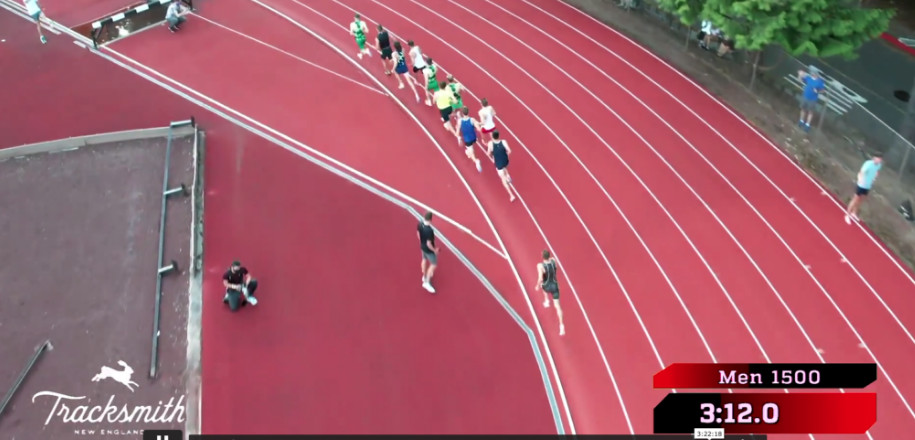
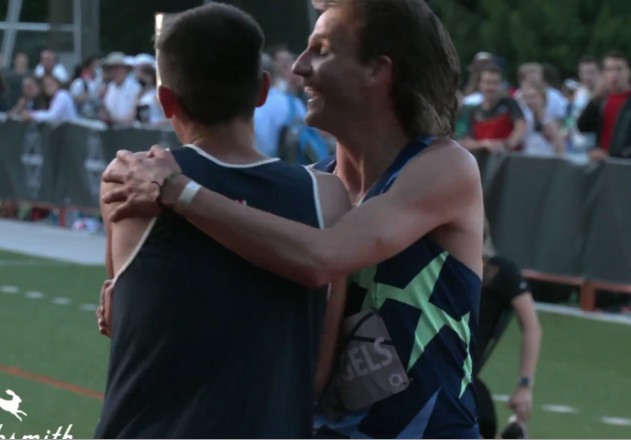
Webb’s 3:53.43 has gone unchallenged for two decades, but according to World Athletics’ scoring tables, Kessler’s 1500 tonight was the superior performance; converting to 3:51.34 for the mile (Webb’s 3:53.43 mile converts to 3:36.30 for 1500). Kessler’s time is also faster than Jim Ryun‘s US U20 1,500 record of 3:36.1 which had stood since 1966.
Kessler, who was last in the lead pack of ten with 200m to go, moved up well the final 100 meters, and threw up his hands just before the finish line as he saw the clock and finished 5th in a race won by reigning US champ Craig Engels in a personal best of 3:33.64. Engels, the 2019 US indoor/outdoor champion and a World Championship finalist, entered tonight with a pb of 3:34.04 — barely faster than what Kessler ran.
Kessler, a senior at Community High School in Ann Arbor, Mich., was already a high school record holder after running 3:57.66 in February to take down the indoor mile record. Now he is, quite simply, one of the best milers in the United States, regardless of age. His time was the third-best by an American in 2021 — only the winner Engels and fourth-placer Henry Wynne (3:34.08) have run faster this year.
How incredible was Kessler’s run? He didn’t just break the US high school record by almost four seconds; he also ran faster than the collegiate record of 3:34.68 set by Notre Dame’s Yared Nuguse two weeks ago. He also hit the Olympic standard of 3:35.00 — one of just seven Americans to have done so during the qualification period.
Kessler’s run was so much faster than any other high schooler has run for 1500 that it is hard to even make comparisons. Webb’s 3:53.43 at Prefontaine, which celebrated its 20th anniversary on Thursday, is the obvious one. Just like Webb, Kessler finished 5th in a field of pros, and just like Webb, Kessler was mowing them down over the final 100 meters.
As impressive as Kessler’s run was tonight, it was not the greatest ever performance by an American U20 athlete. That remains Jim Ryun’s 3:51.3 mile in July 1966 — a world record at the time that would stand for eight years. Ryun was just 19 years old at the time of that race, which came after his freshman year of college.
Kessler is a high school senior. His sometimes training partner, Nick Willis, an Olympic 1500m silver and bronze medallist, was in this race and tried to put it in perspective on the broadcast afterwards, “I became a spectator to the greatest performance ever by a high school miler,” said Willis, noting he himself went out at the pace prescribed for the rabbits for 800, yet was in last place. “It’s like Jim Ryun reincarnated again…He’s such a rookie in terms of running…. He’s so raw.”
by Let’s Run
Login to leave a comment
Social media is changing track and field for the better
Unlike sports such as basketball, football, hockey and soccer, track has never attracted the same attention in terms of viewership and, of course, money. Every four years when the Olympics come around, the world gets excited about the sport, but as soon as the closing ceremonies wrap up it fades into the background. With many of the big track meets only available on expensive subscription services like Runners Space and Flo Track, even fans of the sport have trouble accessing meet coverage — that is, until recently.
Social media, most notably YouTube, has transformed the sport of track and field over the last few years, with coverage of more and more high-level track meets becoming available on the free platform, and an increasing number of athletes and teams using it to promote themselves and give fans an inside look into their lives and training. In a recent YouTube video, several athletes, including Canada’s Justyn Knight, reflected on the change and how they think it is helping the sport progress.
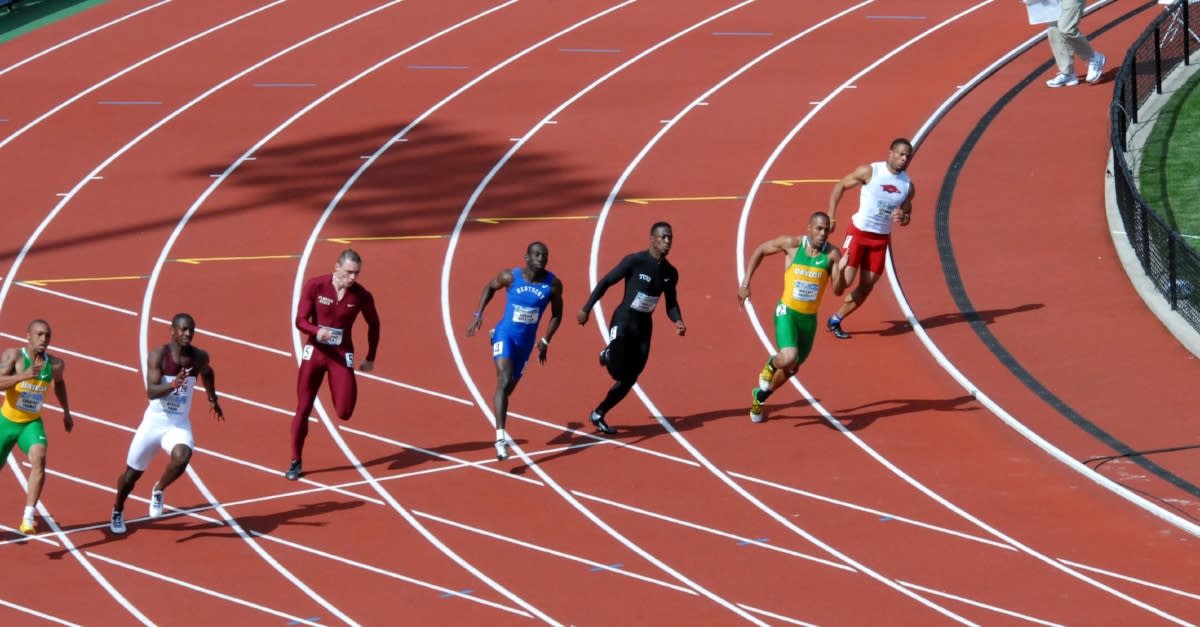
“Involving social media in the sport does nothing but uplift it,” said Knight. “Our generation is in a social media time where it does nothing but make you more money and spread awareness on whatever your cause might be or bring awareness to your team.”
The other athletes in the video echoed Knight’s statements, adding that providing free spaces where fans (particularly young fans) can access content and keep up with their favourite runners creates more excitement around the sport, which ultimately helps brands (and therefore the athletes they support) make more money and improves the sport overall. New Zealand runner Nick Willis also commented on the differences he sees in the sport now compared to when he began his career 20 years ago, noting that social media has allowed smaller, more grassroots meets to flourish.
“Before, the highest-level athletes wouldn’t want to show up to meets that didn’t have any prize money [or] that weren’t on NBC or ESPN,” he said. “It’s good that those things are part of the sport but … it’s cool to be a part of both sides and having done the sport at the high level for 20 years it’s actually rejuvenating for me at the end of my career to be in more community-based events.”
He added that these smaller meets, where athletes pay their own entrance fees and put in a seed time, create a more level playing field for runners, and also allow fans to be a part of the business structure of the sport, in a way. The more people that log onto the YouTube channel to watch the meet, the more sponsors the meet is able to get, generating more revenue to help athlete cover their expenses and to allow meet organizers to put on other, similar events.
Social media in general, whether it’s YouTube, Instagram or TikTok, gives elite runners an opportunity to market themselves, to promote their personal brands and to connect with fans in a way that athletes of previous generations were unable to do. It provides greater access to the sport for fans of all ages, particularly young fans, which will help to inspire and motivate the next generation of elite runners. Running may not ever generate the same level of sports mania as football or hockey, but these changes will help the sport to grow by generating more support for athletes hoping to compete at a high level.
by Running Magazine
Login to leave a comment
Nick Willis Set a Record by Running a Sub-4 Mile for the 19th Straight Year. Here’s How He Did It
On January 19, Nick Willis wrote himself into the record books when he ran a 3:58.63 mile. His time marked the 19th consecutive calendar year that the 37-year-old Kiwi runner has clocked a sub-4-minute mile.
A middle-distance specialist, Willis has sub-4 miles every year since 2003—and even the two years before that, he clocked a 4:01 and 4:02. It wasn’t until 2019 that the record of consecutive years running a sub-4 mile even came onto Willis’s radar. Someone had mentioned that he was one year away from tying fellow countryman and running legend John Walker, who ran sub-4 miles for 18 consecutive years from 1973 to 1990.
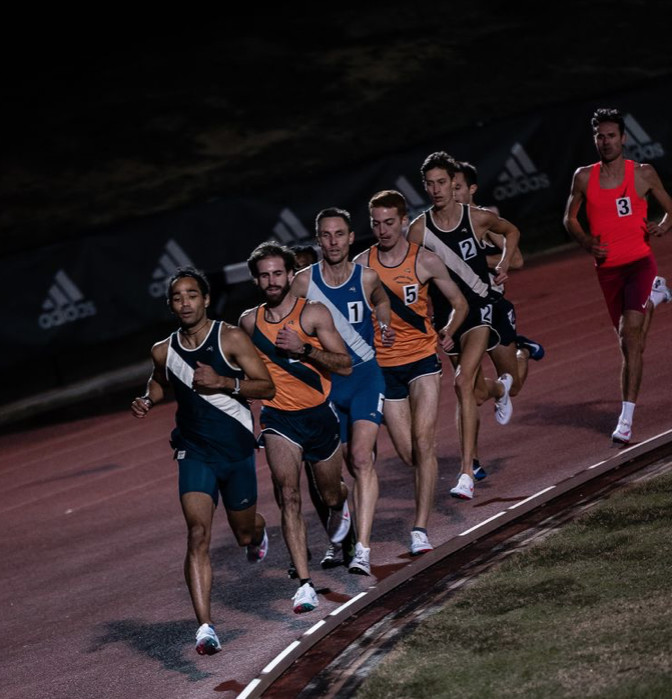
When he tied the record in 2020 at the New Balance Grand Prix in Boston, Willis realized he could get the obscure record if he could find a race—something made far more difficult because of COVID-19.
With some research, Willis found the Orange Winter Classic #1 in Orlando, Florida on January 19.
“I’m 37,” Willis told Runner’s World. “I’d rather try in January than in August when I’m eight months older.”
Because of the possibility of not having consistent track access at home in Michigan because of weather or the pandemic, Willis prepared for the event by spending the month between Thanksgiving and Christmas in Flagstaff, Arizona, training aggressively at altitude. A week before the race, back home in Michigan, Willis did a 1200-meter time trial that gave him confidence.
Normally, Willis said, the first race of the season is a bit rusty, but everything lined up right for his record attempt.
“I never felt comfortable, like I was on the edge of the red line the whole way,” Willis said about the race. “We were still able to do it though thanks to good pacing from pacemaker Victor Palumbo, who became the first American to run a sub-4 on an outdoor track in December on U.S. soil. He got us through three laps and did an incredible job.”
In the final 200 meters, Willis wasn’t able to get on the shoulder of eventual winner Mason Ferlic, but he hung on for second and a 3:58.63—good enough to grab the record from Walker. His splits were 1:01.64, 59.02, 59.30, and 58.68 on his way to breaking Walker’s record.
“[Walker] is very involved in local council now, so I’m sure he doesn’t care about this as a record at all,” Willis said. “Besides, he had the real mile world record [from 1975 to 1979].”
Willis’s longevity in the sport is unexpected. Over the years, he’s faced four surgeries, five stress fractures, pulled muscles, strained tendons, and countless minor injuries that have caused him moments of doubt.
He credits his coach, Ron Warhurst—also the head coach at the University of Michigan—and his wife, Sierra, for sticking with him through the highest and lowest times during his nearly two decades of competition.
“A lot of times, I would’ve walked away from the sport satisfied with what I achieved and they always thought there was more left in the tank,” Willis said. “What I did on Tuesday night was not without the unwavering support of them encouraging me. They are the ones who deserve the recognition.
As Willis has gotten older, he says the moments of motivation waver more than before. His motivation was at 90 percent most of the time in his younger years. As it has become tougher to compete with age, he says that number starts to waver toward 80 or 70.
“Tuesday was the first time I felt a lot of satisfaction crossing the line in the last few years,” he said. “I’ve felt frustrated because it doesn’t come as easy as it used to. Someone who finishes strong with a kick is what I’m known for and it’s been a struggle with why I can’t do that. I’m holding myself to unfair expectations. At 37, I can take a step back and look at it with a more relative perspective. Four minutes was the goal. I’m not a 3:50 miler anymore.”
The day after his record, Willis did what many great champions do and went to Disney World with Sierra and their two sons. He’ll be there for seven days while also squeezing in another race—an 800—on January 22. He has five races on tap in the coming weeks.
Because of the pandemic, he’s not sure how many races, especially indoor track races, will happen. However, he is hopeful to compete this winter, to make another New Zealand Olympic team, and to compete in some of the newly-formed Pro Track Series events this year. He also said he plans to ski and skateboard more.
As for his sub-4 streak, he’s not totally sure yet if it’ll continue.
“It seems like a crime to stop at 19,” Willis said. “I have a lot of other things these days. I’m working with Tracksmith now which has been a transition from just a pro running career to a corporate role. But if everything lines up, and I can still have some ski trips out west, I’ll definitely give it a shot.”
by Runner’s World
Login to leave a comment
New Zealand´s Nick Willis made history on Tuesday night by breaking 4:00 in the mile for the 19th year in a row
Nick Willis Sets World Record by Breaking 4:00 in the Mile for 19th Straight Year.
Willis, 37, ran 3:58.63 to finish second behind Mason Ferlic (3:58.05) at the Orange Winter Classic #1 meet in Clermont, Fla., breaking a tie with fellow New Zealand legend John Walker, who broke 4:00 for 18 years in a row from 1973-90.
Willis broke 4:00 for the first time on February 8, 2003, at the Meyo Invitational in South Bend, Ind., when he was 19 years old, and has broken 4:00 every year since, with a personal best of 3:49.83 at age 31 in 2014. He has also earned two Olympic 1500m medals during that span — a silver in 2008 in Beijing, and a bronze in 2016 in Rio.
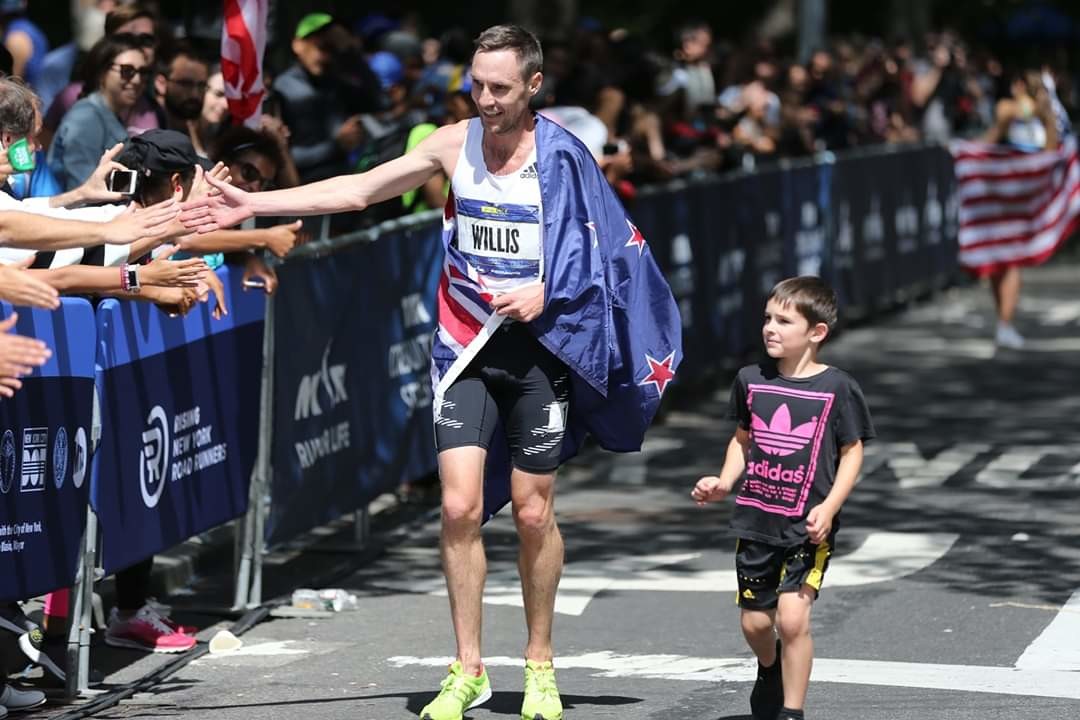
It’s also worth noting that Willis came close to starting his streak two years earlier, as he ran 4:01.32 as a 17-year-old in 2001 and 4:02.46 in 2002.
by Jonathan Gault
Login to leave a comment
Nick Willis, Emma Coburn, Cory McGee, Ce’Aira Brown And Morgan McDonald Among Those Competing At The Music City Distance Carnival
Putting on an invitational track meet in the United States is hard in the best of times, but is nearly impossible during the current COVID-19 pandemic. Meeting the USA Track & Field requirements for a COVID-safe meet are very difficult, never mind getting adequate sponsorship in the middle of a recession, attracting the attention of top athletes who are hunkered down at home just trying to stay safe, and having to stay within state and local regulations for in-person gatherings. Large crowds aren’t permitted anywhere, so you can forget about revenue from ticket sales.
But Dave Milner of the Nashville Track Club is an especially determined meet director. The 49 year-old coach and former athlete, originally from Leeds, England, was determined to hold the 18th edition of the Music City Distance Carnival this year, and do it at a high level despite the crisis. After several delays, countless hours of work, and a little bit of good luck, his meet is set to go this Saturday in Nashville and will feature top-level athletes with Olympic or World Championships credentials like Ben Flanagan of Canada; Nick Willis of New Zealand; Edose Ibadin of Nigeria; Morgan McDonald of Australia; and Emma Coburn, Cory McGee, and Ce’Aira Brown of the United States.
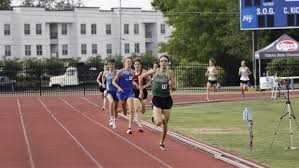
Milner started the process of re-thinking the meet when the COVID crisis first struck in March.
“The meet is typically end of May, beginning of June,” Milner told Race Results Weekly in a telephone interview today. He continued: “When all of this stuff happened in early March I was still optimistic that I could get it done that weekend. Nobody knew then how bad it was going to be.”
But as the virus spread in the United States, especially in the south, keeping the meet on it’s normal date became impossible. Milner first tried for a one-month delay, thinking at the time that it would be adequate.
“I pushed it back to the end of June, still thinking, yeah, we can have the meet,” Milner said. He was in communication with USA Track & Field about the new requirements for battling the spread of COVID and thought that staging the meet was doable in that time frame. He had a core set of training groups which had traditionally sent athletes to the meet including Team Boss in Boulder, the Atlanta Track Club, and the Under Armour District Track Club in Washington, D.C., and he felt he could count on those athletes for 2020.
But Milner had another big problem: securing a venue. The meet had usually been staged at Vanderbilt University, but that wasn’t an option this year.
“I was having a hard time trying to find a venue,” Milner said. “Vanderbilt, where the meet usually is, didn’t really want to have anything to do with it. I foresaw that early and started speaking to other venues as early as April.”
Eventually, Lipscomb Academy agreed to host the meet, and Milner decided to push the date back much further to increase the chances that athletes would be in shape and that he wouldn’t have to delay it again. He also wanted his meet to fall into a sequence with the two other meets planned for the southern region, Sir Walter Miler in Raleigh, N.C., (scheduled for August 7, but ultimately cancelled), and the Ed Murphey Classic in Memphis (scheduled for August 22).
Milner also caught another break. Swiss shoe company On, which just launched a new USA training group in Boulder under coach Dathan Ritzenhein, decided to come on board as a sponsor. To give his new sponsor the best exposure, Milner wanted the meet to have a free, live broadcast. Working with timing and meet production consultant Cody Branch from PrimeTime Timing, the meet will be broadcast live via YouTube with commentary (link to be posted on the meet website at runmcdc.org).
“We really felt there was an opportunity to hit this out of the park from a production stance,” Milner said enthusiastically. He added: “It will be live and free, which I think people will be thrilled about.”
On Saturday, access to the track will be tightly controlled. The athletes (except high school athletes) have to demonstrate that they have had two negative COVID tests since August 8 in order to compete, and the tests have to be at least 24 hours apart. Athletes must present proof of the negative tests before they will be allowed to compete, and most are emailing those results in advance of their arrival to the track at Lipscomb. Event staff and officials will have to wear masks at all times, and the athletes will have to wear masks while they are not warming up, competing or cooling down. The races are spaced out wider than usual on the schedule because competitors must leave the track completely before athletes running the next race are allowed onto the track. Milner also has to follow state guidelines to control the total number of people who are in the stadium.
“As far as the total number of people at the event, we’re allowed 250 at any given time,” Milner said. “We’re asking people not to show up for their event more than 90 minutes beforehand. And we’re asking people after they run to leave, please. We’re not encouraging people to stick around and watch the meet.”
Milner has organized some excellent races for Saturday, despite the lack of prize money. Many athletes will be trying to earn qualifying marks for next year’s USA Olympic Team Trials (standards are here: https://bit.ly/3kDXDlb). The two 1500m races may be the best with top athletes like McGee, Yolanda Ngarambe of Sweden, Coburn, Katie Mackey and Emily Lipari in the women’s section, and Abraham Alvarado, Willy Fink, Sam Prakel, Ollie Hoare and McDonald of Australia, and Carlos Villarreal of Mexico in the men’s. Milner is hoping for the fastest time on U.S. soil for this year (currently 3:34.53 by Britain’s Josh Kerr in Newberg, Oregon, on July 31).
“That race is stacked,” said Milner of the men’s 1500m. “We’re pacing it for 3:33-high pace.”
by Let’s Run
Login to leave a comment
Two elite athletes Mary Cain and Nick Willis sign with Tracksmith as full-time employees
Tracksmith, the independent running apparel brand out of Boston, announced its newest pair of partner athletes: Mary Cain and Nick Willis. This is not a traditional partnership, though, as Cain and Willis will both be working as full-time employees for the company in addition to running for the brand.
The duo will represent Tracksmith as they both work toward the Tokyo Olympic Games, which are set for July 2021, and they will do it as amateurs, a term that Tracksmith is looking to reclaim for everyone who loves to run.
In a post entitled “For the love” on the Tracksmith website announcing the brand’s newest partnership, founder and CEO Matt Taylor talks about the word “amateur,” which comes from Latin roots meaning “to love” and “I love.”
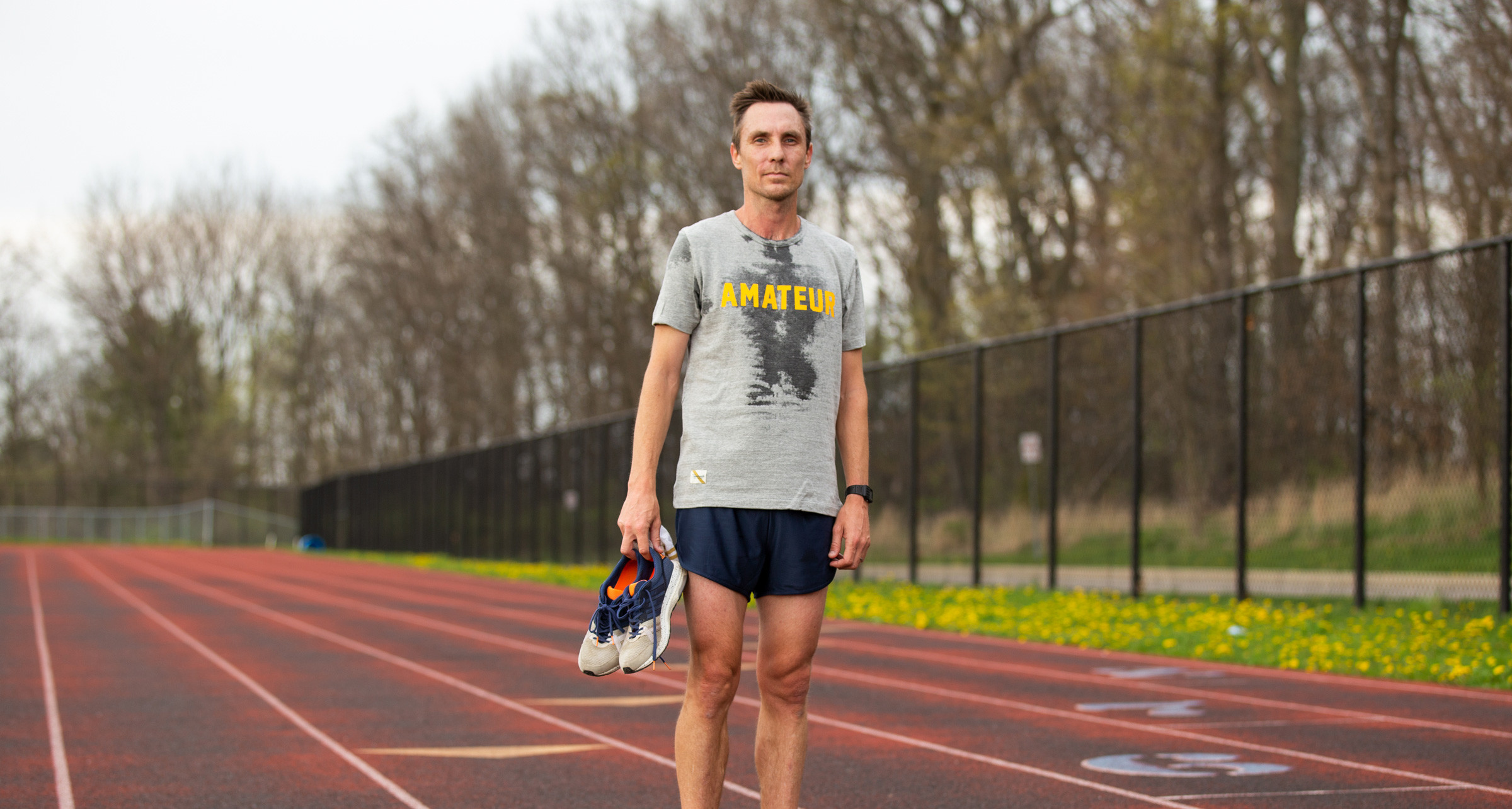
Taylor says “amateur” only recently became a term for non-professionals (around the 19th century or so), and now the team at Tracksmith wants to take the term back to its roots and refer to anyone who loves to run as “amateurs.”
In sports, athlete sponsorships are always dictated by results, and the better an athlete performs, the stronger their brand partnerships become. On the other hand, if their results start to decline, it’s not uncommon to see these relationships deteriorate and disappear.
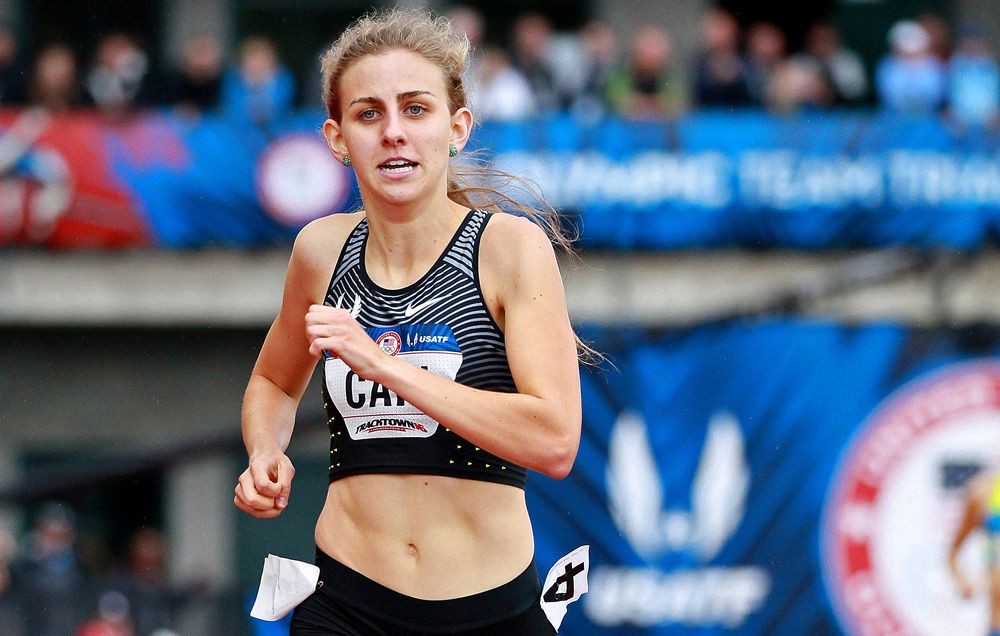
This won’t be the case for Cain and Willis, because, working as Tracksmith employees and representing the brand as amateurs, they will have “the freedom to participate in the sport with no expectations or pressures outside of the ones they place on themselves.”
Cain made international headlines in November when she told the New York Times about the abuse she sustained while running with the Nike Oregon Project (NOP) under now-banned coach Alberto Salazar. Cain won gold in the 3,000m at the the world junior championships in 2014 before leaving the NOP a year later. In 2020, she returned to racing for the first time since 2016, and she is now working toward making her first U.S. Olympic team.
Cain’s official role at Tracksmith is New York community manager, and she will help grow the company’s “on-the-ground and virtual efforts in one of the most vibrant running scenes in the world.”
Willis, who’s 37 years old, tweeted he was leaving Adidas on Sunday, and there was some speculation that he might be retiring. Today, he tweeted again, saying, “I’m not retiring; I’m turning amateur.” Willis is a two-time Olympic medallist for New Zealand, having won silver in the 1,500m in Beijing in 2008 and bronze in the same event eight years later in Rio.
Willis is quoted on the Tracksmith site, saying, “It may sound counterintuitive, but I always discovered that my running career thrived the most when I embraced more. My best years, my fastest times, all emerged from times in my life when my running came, well, second.”
He’ll be looking to qualify for his fourth Olympics in 2021 while working as the athlete experience manager at Tracksmith, building programs to “inspire, motivate and deepen our community’s connection to the sport.”
by Ben Snider-McGrath
Login to leave a comment
Allyson Felix will headline the 113th NYRR Millrose Games for this weekend
Allyson Felix leads a host of Olympic medalists at the world’s top annual international indoor track and field meet, the NYRR Millrose Games, live on NBC Sports on Saturday.
Felix, the most decorated female track and field Olympian with nine medals, competes in the 60m at the Armory in New York City. She takes on a field including U.S. 100m champion Teahna Daniels and 17-year-old Jamaican phenom Briana Williams.
NBC and NBC Sports Gold air live coverage of the Millrose Games on Saturday from 4-6 p.m. ET. Full start lists are here.
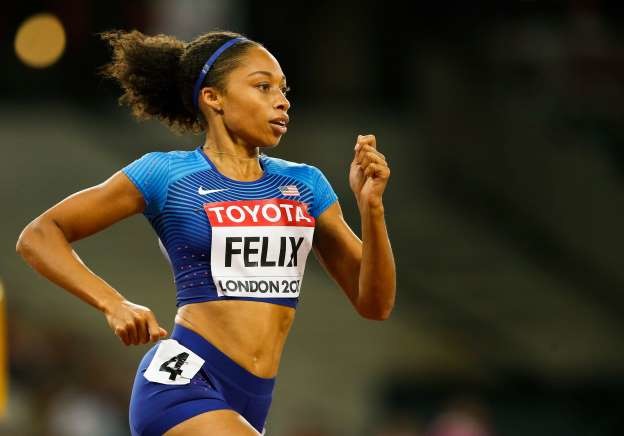
Athletes are preparing for the USA Track and Field Indoor Championships in Albuquerque, N.M., the following weekend, and the Olympic trials in Eugene, Ore., in June. The world indoor championships, traditionally held in even years, have been postponed due to host nation China’s coronavirus.

Felix is racing indoors this season for the first time since 2016. She missed the last indoor season following the birth of daughter Camryn. Though Felix is predominantly a 400m sprinter, she said in the fall that she plans to be ready to race the 200m at the Olympic trials. The 200m comes after the 400m at trials, so it could be a safety net if Felix is unable to make the team in the 400m.
In other Millrose Games events, the 60m hurdles features Olympic 110m hurdles champion Omar McLeod of Jamaica, plus the two fastest men from last year — world champion Grant Holloway and Daniel Roberts, both Americans.
World champion Nia Ali and world-record holder Keni Harrison are entered in the women’s 60m hurdles.
Another world champion, Donavan Brazier, leads an 800m field that includes fellow U.S. Olympic team contenders Bryce Hoppel, Brannon Kidder and Isaiah Harris.
In field events, Olympic champion Ryan Crouser takes on world champion Joe Kovacs in the shot put. Olympic silver medalist Sandi Morris headlines the women’s pole vault.
Action concludes with the Wanamaker Men’s Mile. Two-time Olympic 1500m medalist Nick Willis of New Zealand aims to win that race for the first time.
Login to leave a comment
NYRR Millrose Games
The Pinnacle of Indoor Track & Field The NYRR Millrose Games, first held in 1908, remains the premier indoor track and field competition in the United States. The 2025 edition will once again bring the world’s top professional, collegiate, and high school athletes to New York City for a day of thrilling competition. Hosted at the New Balance Track &...
more...The 113th NYRR Millrose Games will host the greatest array of talent ever assembled
The 113th NYRR Millrose Games will host many of the world’s best track & field men and women to perform on centre stage on February 8 at The Armory New Balance Track & Field Center in Washington Heights in New York City.
This year’s NYRR Millrose Games field is arguably the most talented overall since the meet moved to The Armory in 2012.
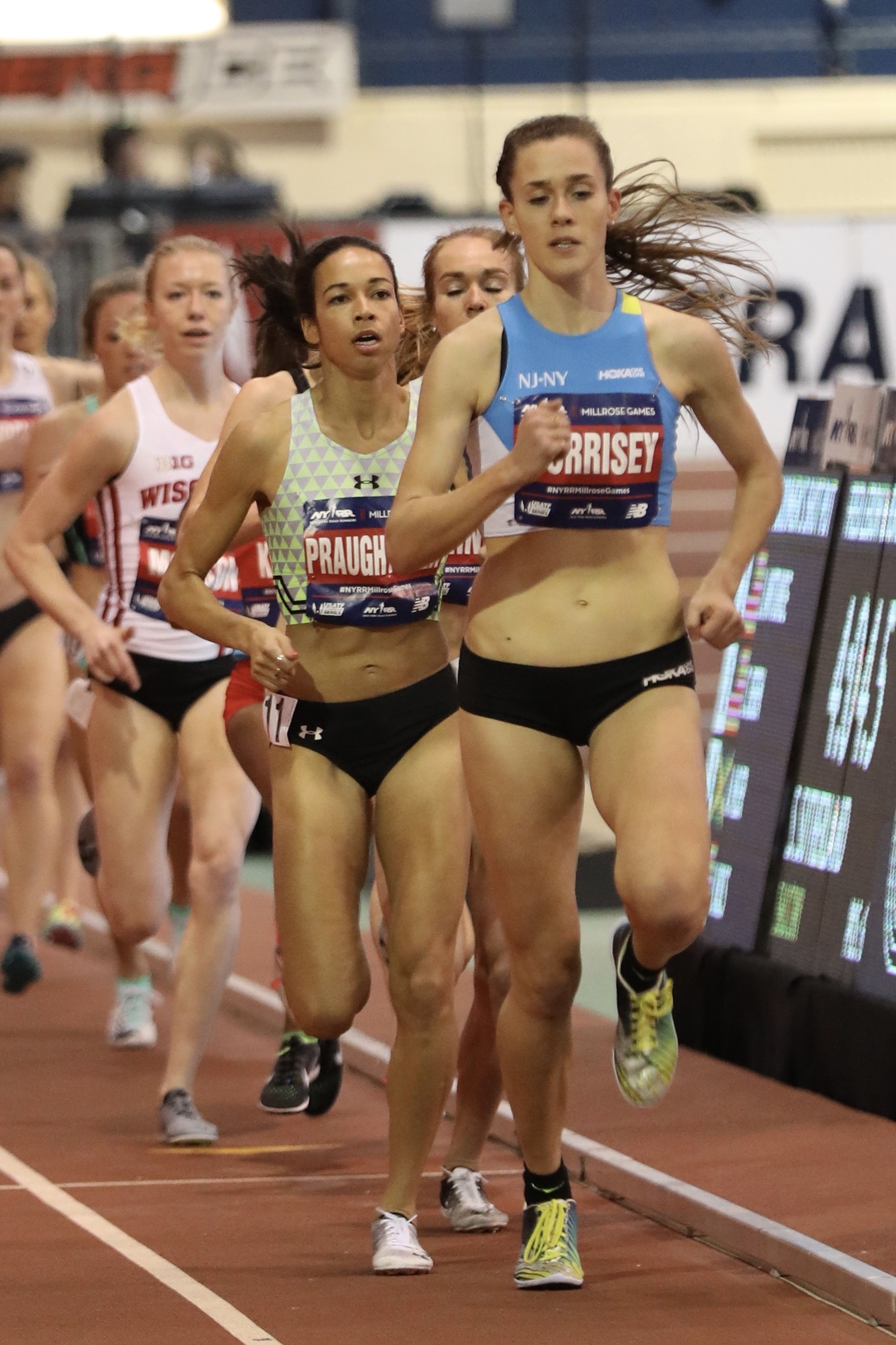
NYRR Millrose Games Meet Director Ray Flynn takes it one step further: “This year’s Millrose Games features probably the greatest array of talent ever assembled in its 113-year history.”
Moreover, 16 women and 15 men are Olympians in the 113th NYRR Millrose Games.
Allyson Felix headlines the women’s side. Felix is a six-time Olympic gold medalist and is the most decorated athlete in the history of track & field. She is entered in the Women’s 60m and has her sights set on the 2020 Tokyo Olympics this summer.
Joining Felix as the top women track & field athletes in this year’s NYRR Millrose Games are: Ajeé Wilson (competing in the Jack and Lewis Rudin Women’s 800m), the American Indoor and Outdoor record-holder in the 800m, two-time World Championships bronze medalist and two-time World Indoor silver medalist, Laura Muir (Jack and Lewis Rudin Women’s 800m), a four-time European Indoor champion and 2018 European 1,500m champion.
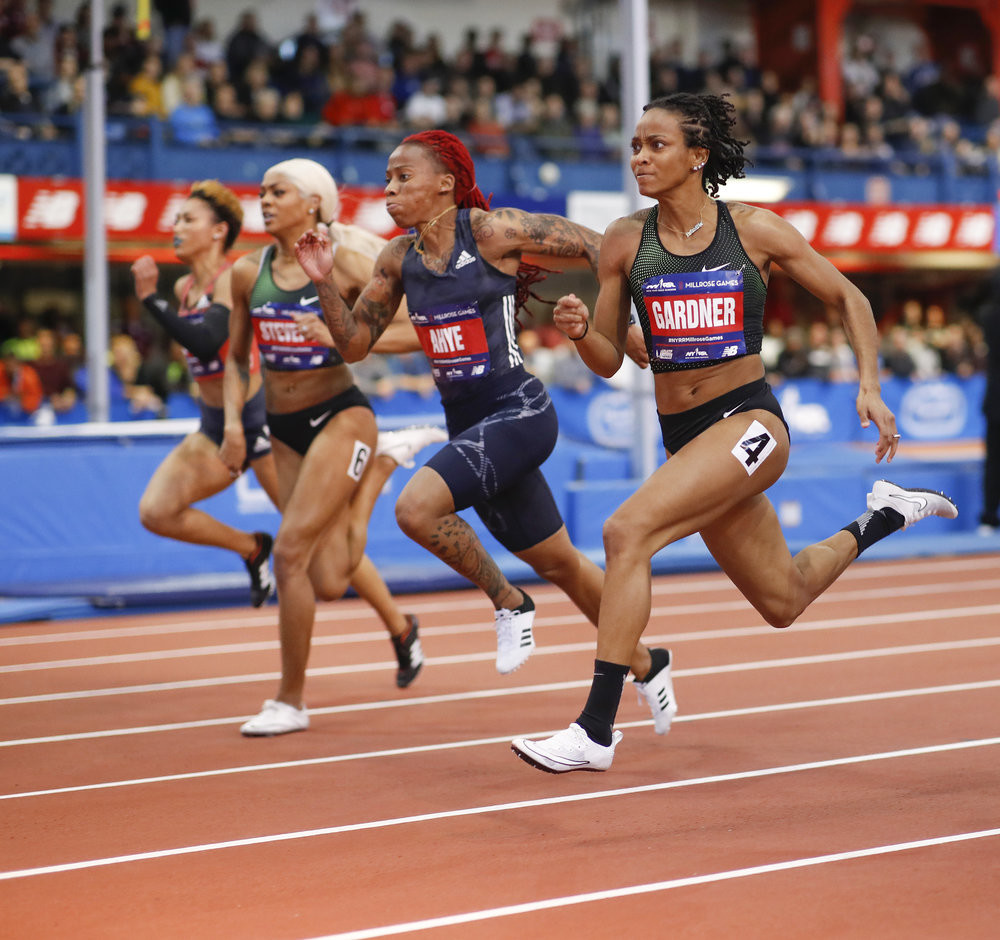
Sandi Morris (Women’s pole vault), the World Indoor champion in 2018 and 2016 Rio Olympics silver medalist, Kenni Harrison (Women’s 60m hurdles), the 100m hurdles world record holder, 2018 World Indoor champion and 2019 World silver medalist, Nia Ali (60m hurdles), 2019 World gold medalist in 100m hurdles and 2016 Rio Olympics silver medalist, Wadeline Jonathas (Women’s 400m), 2019 World Championships gold medalist in 4x400m Relay.
Konstanze Klosterhalfen (Women’s Wanamaker Mile), the defending Women’s Wanamaker Mile champion and 2019 World Championships bronze medalist in the 5,000m, Nikki Hiltz (Women’s Wanamaker Mile), 2019 World Championships 1,500m finalist and last weekend turned in a PR 4:29.39 to win the mile at the Dr Sander Invitational Columbia Challenge at The Armory, Elinor Purrier (Women’s Wanamaker Mile), the 2018 NCAA Indoor Mile champion, runner-up in the 2019 New Balance 5thAvenue Mile Presented by NYRR with a time of 4:16.2 on the heels of winner Jenny Simpson’s 4:16.1 and this past weekend set a personal-best 9:29.19 to win the two-mile race at the New Balance Grand Prix, Brittany Brown(Women’s 400m), 2019 World Outdoor Championships 200m silver medalist.
The top men competing for feature Ryan Crouser and Joe Kovacs, who will reprise last year’s duel in the men’s shot put from the centre of the infield. Crouser is the 2016 Olympic champion and 2019 World silver medalist, while Kovacs is the 2015 and 2019 World champion and the 2016 Rio Olympics silver medalist.
Other top men competing in the 113th NYRR Millrose Games include, Omar McLeod (Men’s 60m hurdles), 2016 Rio Olympics gold medalist, Grant Holloway (Men’s 60m hurdles), the 2019 World Championships gold medalist in the 110 hurdles, Ronnie Baker (Men’s 60m), 2018 World Indoor Championships bronze medalist in 60m and third fastest 60m in history.
Donavan Brazier (Men’s 800m) 2019 World Championship gold medalist and American indoor and outdoor record-holder in 800m; and in 2019 he broke the Indoor world record in 600m at USATF Championships, Michael Saruni (Men’s 800m), NYRR Millrose Games champion, NCAA record-holder and Kenyan Indoor 800m record-holder, Isaiah Harris (Men’s 800m), 2018 NCAA champion, Bryce Hoppel (Men’s 800m), 2019 NCAA champion and World Championships finalist, Rai Benjamin (Men’s 300m), 2019 World Championships silver medalist in 400 hurdles and 2019 U.S. Champion 400m hurdles.
Filip Ingebrigtsen (Men’s NYRR Wanamaker Mile), Norwegian National record holder in both the 1,500m and mile, and 2017 World Championships bronze medalist in 1,500m, Nick Willis (Men’s NYRR Wanamaker Mile), two-time Olympic 1,500m medalist, silver (2008) and bronze (2016). When Willis ran a 3:59.89 last weekend in the New Balance Grand Prix it marked the 18th consecutive year he ran a sub-4-minute mile, tying John Walker’s record. Willis won a record-breaking fifth title at the Fifth Avenue Mile last September, Chris O’Hare, (Men’s NYRR Wanamaker Mile), 2018 NYRR Wanamaker Mile champion, Eric Jenkins (Men’s NYRR Wanamaker Mile), 2017 NYRR Wanamaker Mile champion, Paul Tanui (Men’s 3,000m), 2016 Rio Olympics silver medalist in 10,000m.
Login to leave a comment
NYRR Millrose Games
The Pinnacle of Indoor Track & Field The NYRR Millrose Games, first held in 1908, remains the premier indoor track and field competition in the United States. The 2025 edition will once again bring the world’s top professional, collegiate, and high school athletes to New York City for a day of thrilling competition. Hosted at the New Balance Track &...
more...Brazier and Ali kick off World Athletics Indoor Tour with dominant victories in Boston
The 2020 World Athletics Indoor Tour began with national records and fantastic performances in Boston, as world champions Donavan Brazier and Nia Ali kicked off their Olympic campaigns with victories at the New Balance Indoor Grand Prix on Saturday night (25).
Brazier, the world champion in the 800m, dominated the men’s 600m. In the final event of the evening, Brazier came through 400m in 49.62, and obliterated the field to win in a meeting record of 1:14.39. Brazier, who owns the world indoor best for the 600m with his 1:13.77 from last year’s US Indoor Championships, won by nearly six seconds from Michael Stigler.
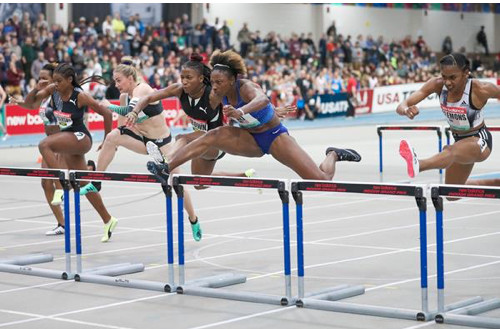

“It feels great,” said Brazier, who was contesting his first race since the World Championships. “This is my tradition so far while being a professional. I’ve run at the Reggie Lewis Center four years straight now and I’ve come out with four wins in a row – so I might as well just keep coming back.”
Ali started her indoor season right where she left off, winning the 60m hurdles in 7.94. The world 100m hurdles champion pulled away over the final barrier to beat world indoor silver medallist Christina Clemons, who finished in 7.98.
“It means a lot to start off the season here,” said Ali after running her fastest 60m hurdles time since winning the 2016 world indoor title. “My family is able to get down and see me and I appreciate that. Especially being from the East coast. I know the crowd is always good to me, so I love it.”
In the women’s 1500m, Jessica Hull of Australia sat on the shoulder of Konstanze Klosterhalfen for 1450m before bursting to the front in the final straight to win in 4:04.14, taking more than two seconds off the Oceanian indoor record.
Klosterhalfen, the German athlete coming off a bronze medal in the 5000m at the World Championship in Doha, finished second in 4:04.38. Ciara Mageean finished third in 4:06.42 to break her own Irish indoor record.
In his first indoor race as a professional, Bryce Hoppel, who did not lose a race collegiately last year, nipped Jake Wightman at the line to win the 1000m in 2:17.41. Wightman, who set a British indoor record of 2:17.51, led going into the final lap, but Hoppel clocked a 27.1 final circuit pick up the win.
World indoor bronze medallist Bethwell Birgen of Kenya won a duel over Edward Cheserek, who announced this week he would be competing internationally for Kenya, in the 3000m. After the pacemaker stepped off the track with just over 1000m to go, Cheserek and Birgen traded the lead before Birgen unleashed a stunning final 300m, closing his last lap in 26.33 to take the win over Cheserek, 7:44.21 to 7:46.74.
In the women’s two miles, Elinor Purrier buried the competition over the final lap to win in 9:29.19 as 2017 world steeplechase champion, Emma Coburn, finished third.
Gabby Thomas blitzed a 36.52 to win the 300m. Thomas, a graduate of Harvard University, won the first heat by a wide margin and held on for the win after Shamier Little beat out Kendall Ellis in the second heat, 37.07 to 37.36.
“It was really great to compete at home, here in Boston,” Thomas said. “Especially this being my first year out of college and having that energy around me, it’s a really an amazing feeling.”
Chris O’Hare of Great Britain held off a hard-charging Nick Willis in the men’s mile, winning 3:59.62 to 3:59.89.
Demek Kemp won the 60m in 6.50, taking 0.05 off his personal best. Trayvon Bromell, running the 60m for the first time since winning the 2016 world indoor title at the distance, finished seventh in 6.84. Obi Igbokwe, a senior at the University of Houston, won the men’s 400m in 46.50.
In the field events, Pablo Torrijos of Spain kept his cool after four successive fouls in the men’s triple jump, eventually sailing out to 16.75m in the fifth round to seal the victory. Amina Smith of the US cleared 1.89m to win the women’s high jump.
The World Athletics Indoor Tour will next head to Karlsruhe, Germany, on 31 January, when athletes will continue to chase tour ranking points as well as wildcards for the World Athletics Indoor Championships Nanjing 2020.
by World Athletics
Login to leave a comment
Past Champions and Olympians will Headline NYRR Wanamaker Mile Men’s Field at 113th NYRR Millrose Games
Olympian and 2018 champion Chris O’Hare of Great Britain, 2017 champion Eric Jenkins of the United States, four-time Olympian Nick Willis of New Zealand, and world championship medalist Filip Ingebrigtsen of Norway will headline a talented NYRR Wanamaker Mile men’s field at the 113th NYRR Millrose Games on Saturday, February 8 at The Armory’s New Balance Track and Field Center.
The signature event at the NYRR Millrose Games has taken place every year on the men’s side since 1926 and will be broadcast live nationally on NBC for the fourth consecutive year from 4:00 p.m.-6:00 p.m. ET, in addition to streamed live online on NBC Sports Gold.
“Already one of the greatest mile races in the world, the men’s 2020 NYRR Wanamaker Mile is expected to be one of the best with past champions, Olympians, and rising stars all lining up in front of a national audience,” said NYRR Millrose Games Meet Director Ray Flynn.

O’Hare won the 2018 NYRR Wanamaker Mile after building an insurmountable lead on the last lap and crossing the line in 3:54.14. In New York, he has also finished as runner-up at the New Balance 5th Avenue Mile three times, most recently in 2018. The Scotland native represents Great Britain on the world stage, having won a bronze medal in the 1500 meters at the European championships and competing in the event at the Rio 2016 Olympics.
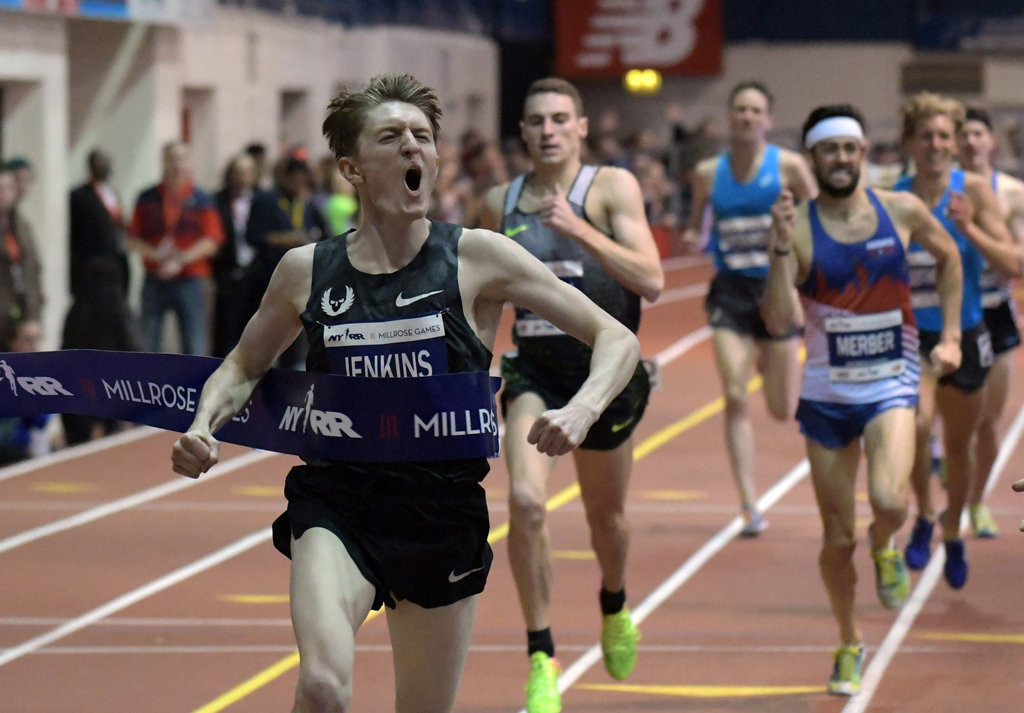
“I have always loved having the NYRR Millrose Games and the NYRR Wanamaker Mile in my racing schedule,” O’Hare said. “When you look back at the athletes who have competed in the NYRR Wanamaker Mile, it goes to show the nature of the event. It is without a doubt, the most prestigious indoor mile race in the world and I can’t wait to step on the start line and go to battle with my fellow competitors.”
Jenkins won the 2017 NYRR Wanamaker Mile in a last-lap sprint against Olympic 800-meter bronze medalist Clayton Murphy. The year prior in New York, he narrowly defeated Olympic 1500-meter champion Matthew Centrowitz to win the New Balance 5th Avenue mile by one-tenth of a second. Last year, Jenkins finished third in New York at the USATF 5 km Championships in Central Park.
Willis has finished as runner-up at the NYRR Wanamaker Mile three times (2009, 2015, 2016), was third twice (2008, 2014) and took sixth last year. As a four-time Olympian, the University of Michigan graduate and Ann Arbor, MI resident won the silver medal in the 1500 meters at the Beijing 2008 Games, carried New Zealand’s flag at the London 2012 Opening Ceremony, and returned to the podium with a bronze medal in the 1500 meters at the Rio 2016 Games. In 2019, he won a record-breaking fifth men’s title at the 5th Avenue Mile, adding to his previous victories on Manhattan’s most famous thoroughfare from 2008, 2013, 2015, and 2018.
Ingebrigtsen coached by his father, Gjert, won the 1500-meter European title in 2016 and a world championship bronze medal in the distance in 2017.
Login to leave a comment
NYRR Millrose Games
The Pinnacle of Indoor Track & Field The NYRR Millrose Games, first held in 1908, remains the premier indoor track and field competition in the United States. The 2025 edition will once again bring the world’s top professional, collegiate, and high school athletes to New York City for a day of thrilling competition. Hosted at the New Balance Track &...
more...Kenya’s Joyciline Jepkosgei was voted the 2019 New York Road Runners Pro Performer of the Year after winning the TCS New York City Marathon
Joyciline Jepkosgei Voted 2019 New York Road Runners Pro Performer of the Year, in the second-fastest time in event history in her marathon debut and also winning the United Airlines NYC Half. The NYRR Pro Performer of the Year award recognizes the top athlete for his or her outstanding achievements at NYRR races over the entire year.
“Joyciline had an incredible year, becoming the first athlete ever to win an open division title at the TCS New York City Marathon and the United Airlines NYC Half in the same year,” said Chris Weiller, NYRR senior vice president of media, public relations and professional athletics. “She’s one of the world’s best runners and she showed it on streets of New York in her first two trips to the United States. We are extremely grateful at NYRR to have had Joyciline inspire our running community twice this year with her historic runs through the five boroughs.”
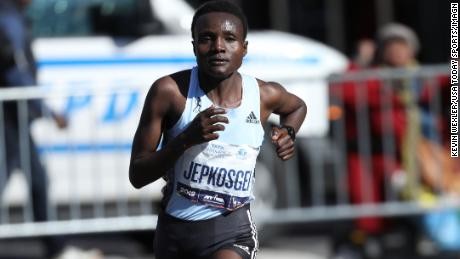
Jepkosgei, 26, won the 2019 TCS New York City Marathon in 2:22:38, just seven seconds off the women’s open division course record. It was the fastest time ever by a woman making her New York City Marathon debut. At the 2019 United Airlines NYC Half, during her first-ever trip to the United States, she won on a solo run to the finish in a time of 1:10:07. The world championship silver medalist in the distance became the sixth woman from Kenya to win the event, and the first to do so since 2014.
The finalists for the award were chosen based off their performances at the following NYRR races in the NYRR Pro Racing Series: NYRR Wanamaker Mile, United Airlines NYC Half, UAE Healthy Kidney 10K, NYRR New York Mini 10K and USATF 10 km Championships, New Balance 5th Avenue Mile, Abbott Dash to the Finish Line 5K and USATF 5 km Championships, and TCS New York City Marathon.
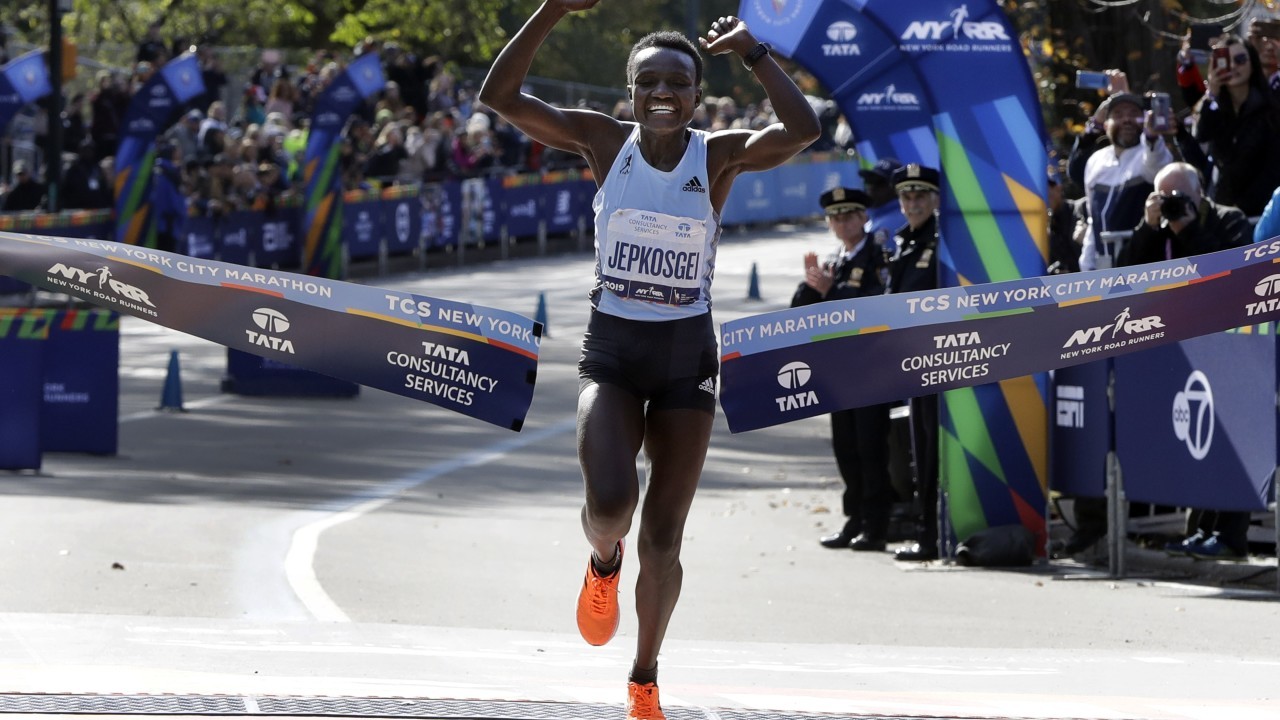
The other nominees for 2019 NYRR Pro Performer of the Year included: Geoffrey Kamworor (Kenya), Daniel Romanchuk (USA), Manuela Schär (Switzerland), Jenny Simpson (USA), and Nick Willis (New Zealand). The public vote accounted for one-third of the final tally, the media vote counted for one third, and an NYRR committee counted for one third.
Login to leave a comment
TCS New York City Marathon
The first New York City Marathon, organized in 1970 by Fred Lebow and Vince Chiappetta, was held entirely in Central Park. Of 127 entrants, only 55 men finished; the sole female entrant dropped out due to illness. Winners were given inexpensive wristwatches and recycled baseball and bowling trophies. The entry fee was $1 and the total event budget...
more...Nick Willis and Jenny Simpson are the New Balance Fifth Ave Mile winners again
Nick Willis appears to be getting better with age.
The 36-year-old runner added to his legendary career with a record-breaking fifth victory at the New Balance 5th Avenue Mile Sunday in New York City.
Willis pulled out the victory with a time of 3-minutes,51.7-seconds in a photo-finish race.
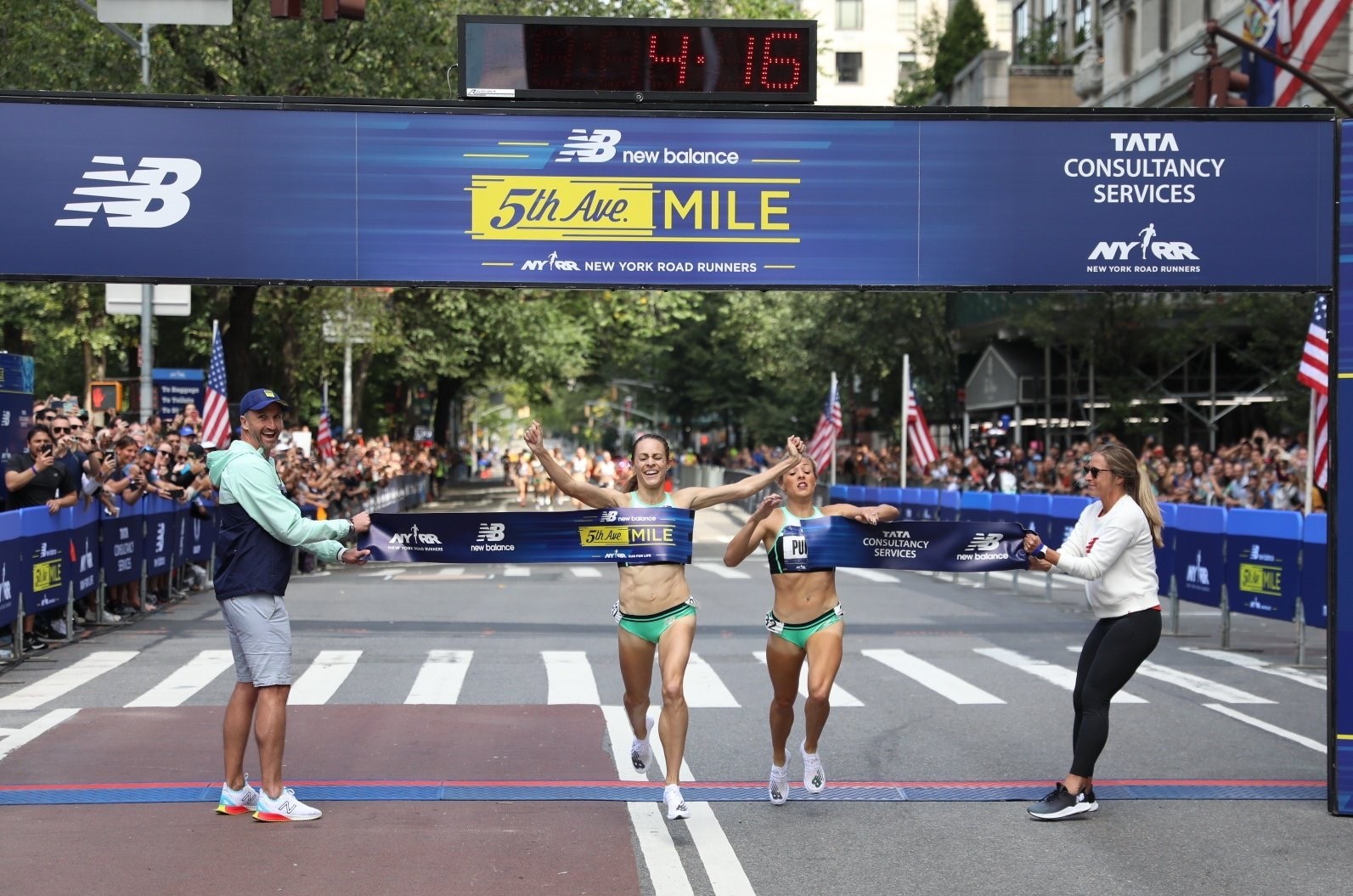
The former University of Michigan runner and 2-time Olympic medalist has now claimed the men’s title five times, with victories in 2008, 2013, 2015 and 2017 and 2019, placing the New Zealand native alone atop the men’s division in the history books.
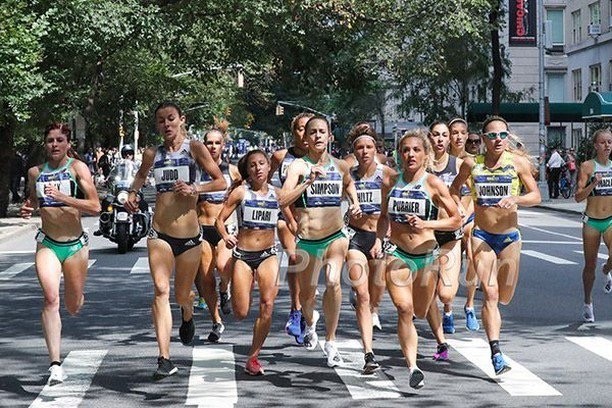
Willis still lives and trains in Ann Arbor and the win adds to his accomplishments, which include a silver medal in the Beijing 2008 Olympics, a bronze medal in the Rio 2016 Games and a bronze medal in the 2016 World Championships.
On the women’s side of the event, Jenny Simpson of Webster City, Iowa, claimed her seventh title in a row and eighth overall in 4:16.1 on Sunday.
The New Balance 5th Avenue Mile race began in 1981 -- two years before Willis was born -- and overtime has become one of the world’s premier mile races.
Login to leave a comment
New Balance 5th Avenue Mile
The New Balance 5th Avenue Mile opens a beautiful 20-block stretch of 5th Avenue to runners of all ages and abilities who want to run their best mile in New York City. Special races include a youth mile, the George Sheehan Memorial Mile for runners age 60 and over, the NYRR Road Mile Championships, and Olympic-caliber professional men's and women's...
more...Jenny Simpson will race for her record-extending eighth title and Nick Willis will chase his record-breaking fifth men’s title at the New Balance 5th Avenue Mile
The New Balance 5th Ave Mile stretches 20 blocks down Manhattan’s most famous thoroughfare and is expected to draw nearly 8,000 runners across 24 heats. It includes specialty heats for youth and seniors, with the professional athlete races rounding out the day. In partnership with New York Road Runners and USA Track & Field, NBC will broadcast the professional athlete races live on NBC at 12:30 p.m. ET.
“The New Balance 5th Avenue Mile is such an iconic road race that allows people of all ages and abilities to participate in the event on one of the most famous streets in New York City,” said Michael Capiraso, president and CEO of New York Road Runners. “This year will be incredibly special, as we celebrate 20 years of NYRR’s free youth programs.”
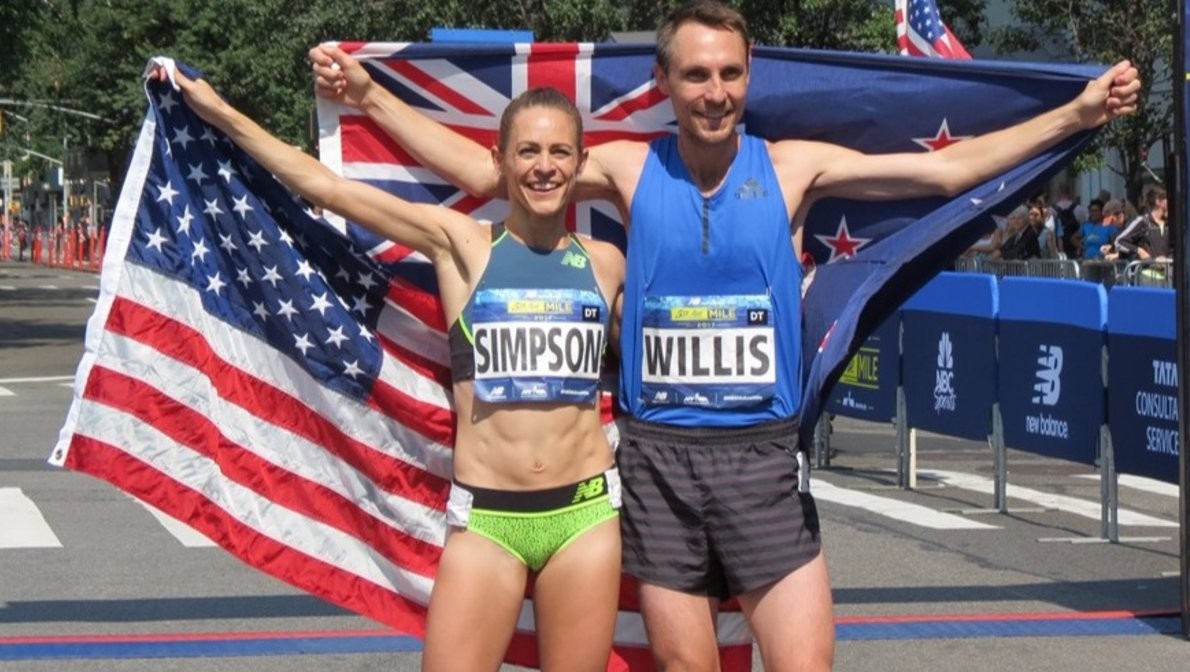
In the professional women’s race, Jenny Simpson, who serves as an ambassador and special advisor to NYRR’s youth programs, owns the event-record time of 4:16.6 on Fifth Avenue, which she set when winning the race in 2017. She has earned three IAAF World Championships medals in the metric mile, beginning with a gold at the 2011 World Championships. She followed that with a silver in both 2013 and 2017. In 2016, she took bronze in the 1500 meters at the Rio Olympics, making her the first American woman in history to reach the podium in that event.
Simpson will be challenged in the professional women’s race by Nikki Hiltz, who just won gold over 1500 meters at the Pan American Games and has been America’s best road miler in 2019 with wins at the BAA Mile, Adidas Boost Games Mile, and the USATF Road Mile Championships.
Allie Ostrander, a three-time NCAA champion in the steeplechase who qualified for her first World Championships this fall, will join them as she lines up for her first road race as a professional athlete. Elinor Purrier, who also qualified for her first World Championships this year, will look to contend as well. Canada’s 2019 national champion Genevieve Lalonde and Olympian Jessica O’Connell, and Great Britain’s Jessica Judd, will lead the international contingent.
Leading the professional men’s field will be nick Willis, a four-time New Balance 5th Avenue Mile champion and two-time Olympic medalist who finished second last year. Willis, who won the event in 2008, 2013, 2015, and 2017, is tied with Spain’s Isaac Viciosa for the most career victories in the men’s race.
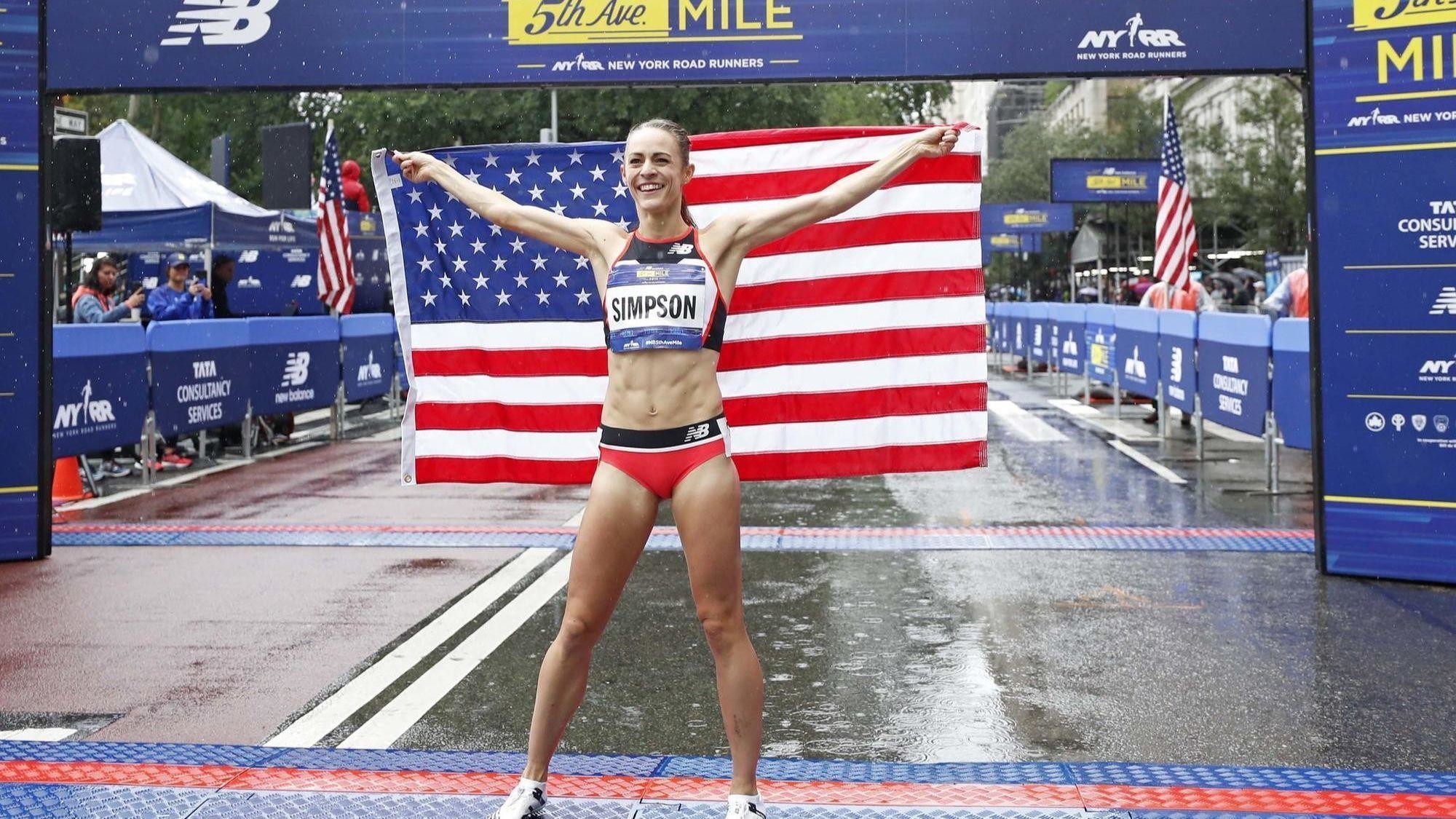
Challenging him as he goes for a record-breaking fifth title will be Great Britain’s two-time New Balance 5th Avenue Mile runner-up Chris O’Hare and road 5K world record-holder Edward Cheserek, who is the most decorated athlete in NCAA history with 17 titles at the University of Oregon.
Also joining them at the start line will be Johnny Gregorek, who is fresh off a silver medal at the Pan American Games and the world’s fourth-fastest miler this year.
Login to leave a comment
New Balance 5th Avenue Mile
The New Balance 5th Avenue Mile opens a beautiful 20-block stretch of 5th Avenue to runners of all ages and abilities who want to run their best mile in New York City. Special races include a youth mile, the George Sheehan Memorial Mile for runners age 60 and over, the NYRR Road Mile Championships, and Olympic-caliber professional men's and women's...
more...Katie Mackey, the only three-time winner in the race’s history, and Tripp Hurt, the reigning USA 1 Mile Road Champion, lead the fields for the 24th Aetna Falmouth Elite Mile
Katie Mackey, the only three-time winner in the race’s history, and Tripp Hurt, the reigning USA 1 Mile Road Champion, lead the fields for the 24th Aetna Falmouth Elite Mile on August 17, organizers announced today. The mile is part of the Falmouth Track Festival, held the evening before the New Balance Falmouth Road Race.
The Aetna Falmouth Elite Mile will begin at 5 p.m. on Saturday, August 17, on the James T. Kalperis Track at Falmouth High School. Total prize purse for the men’s and women’s fields is $15,000, not including possible time bonuses, with the winners each taking home $3,500.
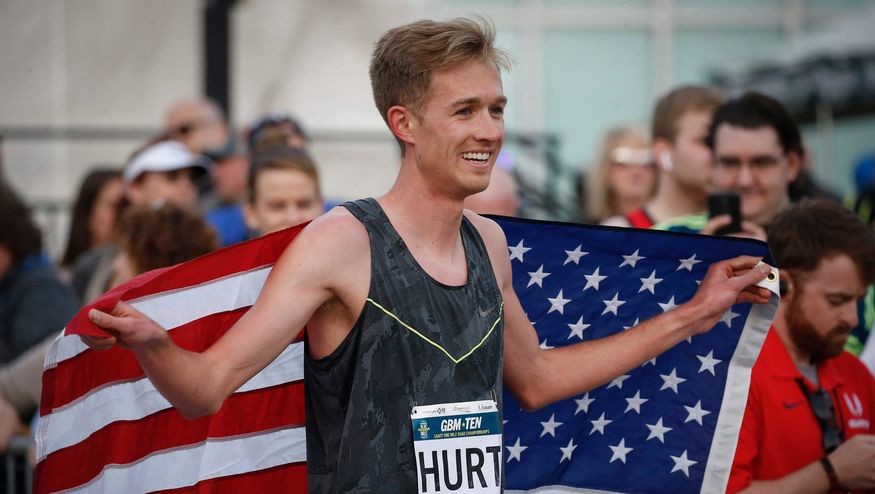
Beginning with the SBLI Family Fun Run and followed by the Aetna Falmouth Elite Mile and the Tommy Cochary High School Mile, the track festival will be streamed live on the New Balance Falmouth Road Race Facebook page beginning at 4 p.m.
Mackey, 31, is the 2017 USA 1-Mile Road Champion, 2018 USATF Club Cross Country Champion, American record-holder in the 4x1500m relay, and was eighth at 3000 meters in the 2018 IAAF World Indoor Championships. Hurt, 26, was third at this year’s USATF Indoor Championships in the 2 Mile and is a two-time USATF Outdoor Championships steeplechase finalist.
Also among the headliners in the women’s race is Heather Kampf, a member of the same medal-winning relay team as Mackey and a four-time USA 1 Mile Road Champion. After three events, Kampf and Hurt lead the standings in the 2019 Bring Back the Mile Grand Prix Tour, on which the Aetna Falmouth Elite Mile is the fourth stop.
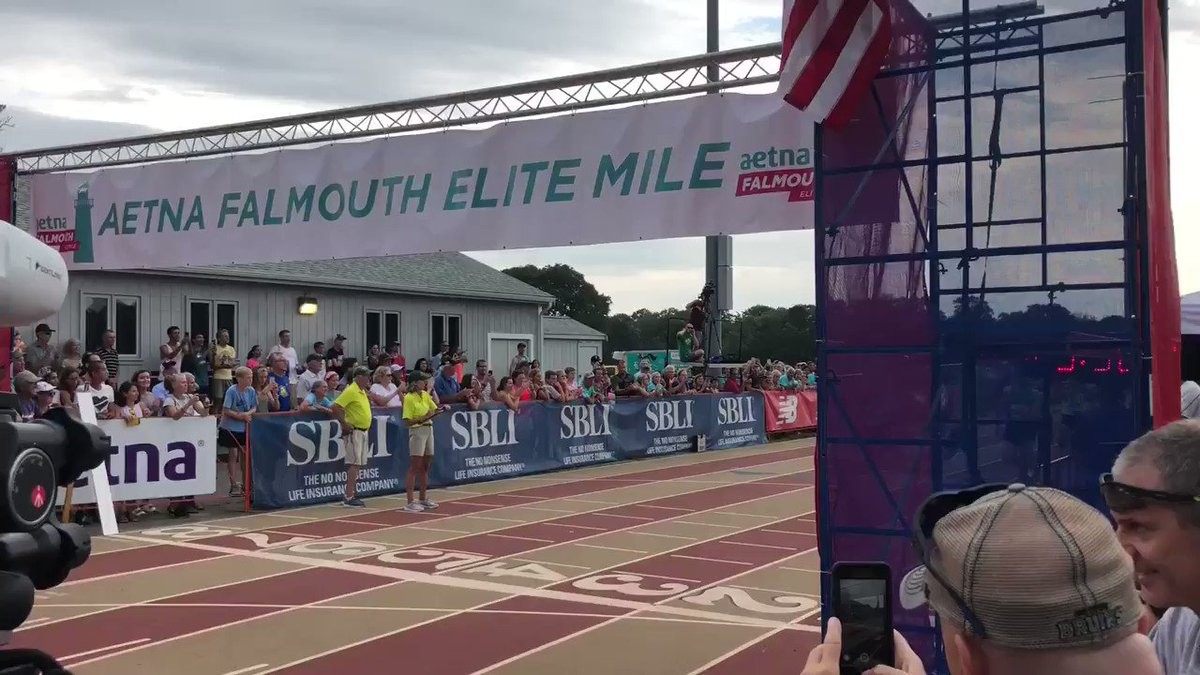
Challenging Mackey and Kampf will be Cory McGee, who was fourth in the 2015 Pan American Games at 1500 meters and won the Sir Walter Miler on August 2 in 4:27.87; Stephanie Garcia, a two-time member of Team USA at the IAAF World Championships in the 3000-meter steeplechase (2011, 2015); Allie Buchalski, 2018 NCAA 5000-meter runner-up; Jessica Harris, third at 1500 meters in the 2019 NCAA Championships; Lianne Farber, a three-time All-American at the University of North Carolina who runs for Team New Balance Boston; Eleanor Fulton, a two-time member of Team USA for the mixed relay at the IAAF World Cross Country Championships (2017, 2019); Vanessa Fraser, fourth in the 2018 NCAA 5000 meters; Dana Giordano, third at 1500 meters in 2016 NCAA Championships, who competes on the B.A.A. High Performance Team and has a family home in Woods Hole; and Heather MacLean, a Massachusetts state champion out of Peabody High School and an All-American while at UMass-Amherst who just finished seventh at USATF Outdoor Nationals in a personal best 4:05.27.
For the men, Tripp will face Josh Thompson, third at 1500 meters at the 2019 USATF Outdoor Championships; Garrett Heath, two-time USA 1 Mile Road Champion (2013, 2015); Pat Casey, the 2018 NACAC silver medalist at 1500 meters; Patrick Joseph, a member of Virginia Tech’s 2018 NCAA Indoor Champion Distance Medley team and fourth in the mile; Daniel Herrera, Mexico’s national record-holder in the mile; Riley Masters, 2018 USA 1 Mile Road Champion; David Ribich, two-time NCAA Division II 1500-meter champion (2017, 2018); Mason Ferlic, 2016 NCAA Champion in the 3000-meter steeplechase; Craig Nowak, a two-time All-American while at Oklahoma State; and Garrett O’Toole, the 2018 Ivy League indoor mile champion who now competes for Arizona State.
O’Toole, whose 4:01.89 mile while running for The Middlesex School was the fastest high school mile in the U.S. in 2014, won the Tommy Cochary High School Mile here in 2013, and still holds the meet record. At the Aetna Falmouth Elite Mile, O’Toole will be attempting to break the 4-minute barrier for the first time.
The Aetna Falmouth Elite Mile, which began in 1995, has played host to more than two dozen Olympians, including Morgan Uceny, Amy Rudolph, Carmen Douma-Hussar, Carrie Tollefson, Suzy Hamilton, Donn Cabral, Marc Davis, Robert Gary, Jason Pyrah, 2012 Olympic silver medalist Leo Manzano and two-time Olympic medalist Nick Willis of New Zealand. The event records are held by Hamilton (4:25.27, 2002) and Jordan McNamara (3:54.89, 2011).
Login to leave a comment
Falmouth Road Race
The Falmouth Road Race was established in 1973 and has become one of the premier running events of the summer season. Each year the race draws an international field of Olympians, elite runners and recreational runners out to enjoy the scenic 7-mile seaside course. The non-profit Falmouth Road Race organization is dedicated to promoting health and fitness for all in...
more...The NYRR Millrose Games will feature seven Olympians and 13 world championship participants
The signature event at the NYRR Millrose Games will feature seven Olympians and 13 world championship participants, including the recent addition to the men’s field of Ethiopia’s two-time indoor world champion Yomif Kejelcha.
The prestigious indoor mile race has taken place every year on the men’s side since 1926 and on the women’s side since 1976. This year’s NYRR Wanamaker Mile races will be broadcast live on NBC.
Quigley, 26, won her first NYRR Wanamaker Mile in 2018, besting fellow U.S. Olympian Kate Grace by just three hundredths of a second in 4:30.05, and then returned to New York later in the year to finish second at the New Balance 5th Avenue Mile. She competed at the Rio 2016 Olympics, finishing eighth in the 3000-meter steeplechase, and the following summer she placed third in the event at the USATF Championships.
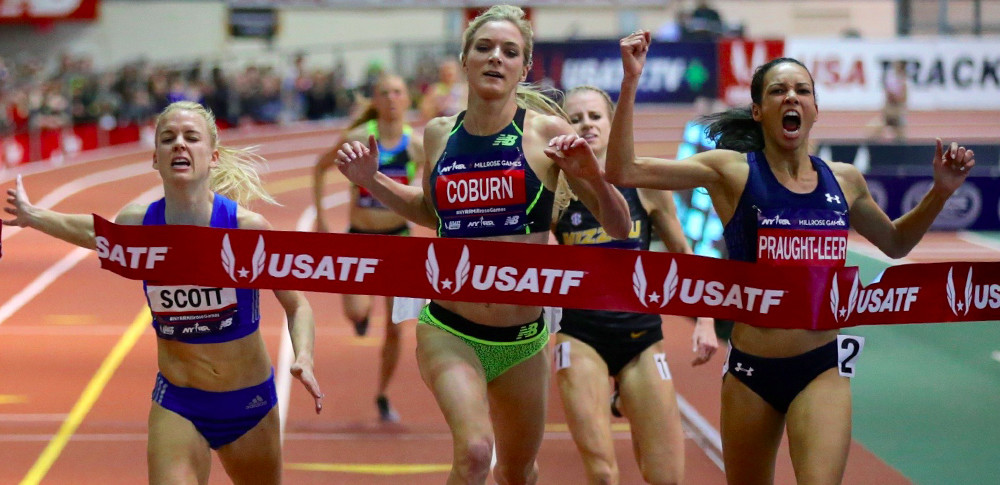
“What better way to start a new year and a new season than taking a trip to NYC to race at one of the most prestigious and longest-running indoor track meets in the country,” Quigley said.
“I can't think of anything better, so I'm going to the NYRR Millrose Games again this year to defend my NYRR Wanamaker Mile title. I'm more excited than ever to put my fitness to the test in the Big Apple.”
Joining Quigley in the women’s NYRR Wanamaker Mile field will be last year’s runner-up, U.S. Olympian Kate Grace, along with 2017 NCAA indoor mile champion Karisa Nelson, 2018 USA Road Mile champion Emily Lipari, and new indoor NCAA 1000-meter record-holder Danae Rivers.
Kejelcha, the two-time defending 3000-meter indoor world champion who opened his 2019 season with a 3:52.61 mile at the University of Washington earlier this month, will join a men’s field that already includes Olympic medalists Clayton Murphy and Nick Willis, and last year’s world’s fastest miler Edward Cheserek.
Last year’s runner-up, Josh Kerr, will also line up, as well as U.S. Olympian Robby Andrews, who will be marking the 10th anniversary of his win in the high school mile at the Millrose Games.
Login to leave a comment
NYRR Millrose Games
The Pinnacle of Indoor Track & Field The NYRR Millrose Games, first held in 1908, remains the premier indoor track and field competition in the United States. The 2025 edition will once again bring the world’s top professional, collegiate, and high school athletes to New York City for a day of thrilling competition. Hosted at the New Balance Track &...
more...Olympic medalists Clayton Murphy and Nick Willis to Headline NYRR Wanamaker Mile Men’s Field at 112th NYRR Millrose Games
Olympic medalists Clayton Murphy and Nick Willis, along with the world’s fastest miler indoors or outdoors last year, Edward Cheserek, will headline the NYRR Wanamaker Mile men’s field at the 112th NYRR Millrose Games on Saturday, February 9 at The Armory’s New Balance Track and Field Center.
The signature event at the NYRR Millrose Games has taken place every year on the men’s side since 1926 and was won last year by Chris O’Hare, and this year it will be broadcast live nationally on NBC for the third consecutive year.
“The NYRR Wanamaker Mile is revered as one of the world's greatest mile races and this year's men’s field in the 112th NYRR Millrose Games looks to be one of the best ever,” said NYRR Millrose Games Meet Director Ray Flynn.

Murphy, 23, of New Paris, OH, was the 2016 U.S. Olympic Trials champion over 800 meters and won bronze in the distance at the Rio 2016 Olympics. The University of Akron graduate set a personal best in Rio, running 1:42.93 to become the third-fastest American in history. Murphy, who won two NCAA titles in 2016 and a Pan American title in 2015, finished second in a personal-best time in his NYRR Wanamaker Mile debut in 2017 and was fifth over 800 meters at last year’s NYRR Millrose Games.
“I am very excited to be back in New York and race the prestigious NYRR Wanamaker Mile,” Murphy said. “I’m sure the fans will be loud and cheering us on, and I am looking forward to putting on a show for everyone.”
Willis, 35, of New Zealand, finished as runner-up at the NYRR Wanamaker Mile three times (2009, 2015, 2016), was third twice (2008, 2014) and took fifth last year. As a four-time Olympian, the University of Michigan graduate and Ann Arbor, MI resident won the silver medal in the 1500 meters at the Beijing 2008 Games, carried New Zealand’s flag at the London 2012 Opening Ceremony, and returned to the podium with a bronze medal in the 1500 meters at the Rio 2016 Games. In 2017, he won a record-tying fourth men’s title at the 5th Avenue Mile, adding to his previous victories on Manhattan’s most famous thoroughfare from 2008, 2013, and 2015.
Login to leave a comment
Paul Chelimo will return to defend his title at Manchester Road Race on Thanksgiving Day
Login to leave a comment
Jenny Simpson becomes the first woman to win the iconic season-ending race seven times at New Balance 5th Avenue Mile
Login to leave a comment
Three-time World Championships medalist Jenny Simpson and Nick Willis to Race the New Balance 5th Avenue Mile
Login to leave a comment





